Introduction
Aqua Computer AMS Copper 360mm Radiator Review
The intention of this write up is to provide information and performance data about the Aqua Computer AMS (Airplex Modularity System) Copper 360mm Radiator for inclusion in the Extreme Rigs Rad Round Up 2015. I’ll be attempting to keeping the review section short and factual, focusing on presenting the performance data compiled through the numerous tests carried out. First of all, a big thanks to Aqua Computer for providing this sample of the AMS 360mm radiator.
Note: You may notice changes in the data presentation in this radiator review as I’m now also including more result data for both Push/Pull and Push Only fan installations.
What’s in the Box?
The Airplex Modularity System Copper 360mm Radiator sample, which from now on I shall call the “AMS”, came in what I assume is the retail packaging. A plain box with a sticker at one end, rather unassuming and inconspicuous.
Opening the thick cardboard box I found what I think is the best internal packaging for a radiator I have come across yet. The radiator is housed among 4 foam pieces, each of which is cut to snuggly fit the radiator and the box. The effort in the packaging impressed and I believe offers great protection of the radiator from factory to end user. The AMS did not arrive with any mounting hardware, and my searching of the box 3 times did not change this.
Extent of delivery:
Aqua Computer states the following is supplied, and I quote;
“One radiator”
Simple then – buy a radiator and you only get a radiator.
Well that’s not entirely correct because the AMS comes pre-fitted with port plugs in all but 2 of the inlet/outlet ports. No allen key is supplied for the hex head port plugs however; this is a BYO kit it seems. For the price the AMS is retailing at I feel as if Aqua Computer could have supplied screw sets and the allen key to provide a complete package for the end user.
You will need appropriate length M3 hardware for mounting the AMS to your case and fans to the rad. While the nut rivets that the M3 screws attach to on the AMS appear tapered on the inside, they will NOT stop the M3 screw from going all the way through, and as some on the threads are directly above the tubes of the core, you must check your screw length carefully prior to installing to avoid permanent and irrepairable damage.
Onwards to technical specifications!
Technical Specifications
Technical specifications as listed by Aqua Computer: (well more of a key feature list and sales pitch which is quoted from the Aqua Computer website):
“- modulares system
– extremely high cooling performance
– extensible in all directions to unlimited size
– no welding residues (since no welding is performed during production)
– can be disassembled, for example for cleaning
– radiators with two separated loops available
– optimized flow resistance
– fins are free of coating for good heat transfer
– pump modules and reservoirs available
– exchangeable side panels for individualisation (brushed stainless steel, anodized aluminum in black, blue and red colour)
– fin spacing optimized for low fan speeds and excellent passive cooling performance
– cooling liquid has no direct contact to aluminum (pipes are made of copper)
– high precision production for perfect fit
– riveted threads for fan installation
– comprehensive accessories available (reservoirs, pump modules, stands, filters, sensors, …)
– many models are also available with copper fins for higher cooling capacity
– approved for a pressure of up to 0.8 bar
– custom made variants for a pressure of up to 5 bar are available upon request.”
Again from the Aqua Computer website…..
“Base component of each radiator is a tube/fin element consisting of 21 copper tubes with aluminum or copper fins and a stainless steel flange. On both ends, terminals made from Delrin are mounted, each equipped with o-ring seals and securely fastened by screws. A recess around each connection thread of the terminal can be used to connect flatly to another radiator using a small adapter – without using bulky tubing. Water flow is predefined by design: Radiators mounted side by side will be connected consecutively; radiators mounted on top of each other will be connected in parallel. The radiator can also be extended in length: Connector modules (sold separately) can be used to connect two tube/fin elements.
“All radiator types have an equal width of 146 mm and fit perfectly into standard 51/4 drive bays. Radiator height (without pump modules) is 63.5 mm, radiator length (without pump modules) can be calculated by adding 44 mm to the specified fan dimensions (for example model 360: 360 mm + 44 mm = 404 mm).
“All threads are G1/4 and all fittings from the Aqua Computer web shop are compatible.
“For special configurations, all radiator sizes are available with two separated coolant loops. For these radiators, approximately 70% of the fin surface is used for the primary loop and approximately 30% for secondary loop. Both loops are sealed against each other, there is no transfer of coolant from one loop to the other.
“Radiator versions with integrated pump module and reservoir reduce space consumption and save time and effort.”
So one of the big features promoted here is the modular nature. Unfortunately I have no other AMS components so I was unable to play ‘Meccano’ and put different configurations together. But that is not the real purpose behind this write-up, we’ll be focusing on performance, but this is definitely a unique feature set that the AMS rads bring to the table.
Dimensions Measured on the radiator tested (retail unit):
Radiator Core Dimensions:
Fluid volume capacity of the AMS was difficult to correctly measure due to the core design, so it is left blank intentionally.
The AMS has a finned tube core construction, not the flat tube and corrugated fin type most commonly seen in PC water-cooling rads.
The finned tube core is based around 21 copper tubes which are open ended at each end of the core, like this in fact:
The flow path is determined by the machined Delrin “terminals” which attach to each end of the core assembly. The modular design of the AMS means that it can be broken down “relatively” easily, although without a good reason there is no need to.
As already mentioned it is the machining inside of the Delrin terminals which determine the coolant flow path through the 21 tubes. In the photo below the port facing up at the bottom is designated as the inlet port to the core from the port end terminal. If you can imagine the return end terminal pictured at the top flipped over so the two terminals are facing each other you can put together the flow path in your mind. What we end up with is a quad pass flow through the tubes with each pass having either 5 or 6 tubes in parallel.
There has been discussion on which “face” should be the hot side (warm coolant) on the NON U-Flow rads and which side (face) should be receiving the fresh intake air. This is the second radiator in the group which I have tested flow direction both ways for a comparison.
Testing on the Aqua Computer Radical 2 radiator showed that OptiFlow did have a performance advantage over reverse flow. So for the AMS I only tested reverse flow with Push Only fans at 1.0 gpm for each of the 3 fan speeds, while OptiFlow was tested at all 12 data points.
Again I thought it unusual that Aqua Computer have chosen to place inlet/outlet direction arrows on the ports, with no info or reasoning as to why. As with the Radical 2, I assumed that the coolant flow path (OptiFlow or Reverse) would make a difference in performance and the required port for coolant inlet would be different depending on the installation orientation and air flow direction – think vertical front mount Vs. horizontal roof mount. We’ll see how much difference, if any OptiFlow Vs. Reverse Flow makes later when we look at the data.
The core itself is quite a thing of beauty, with all the fins perfectly spaced down the tubes.
My averaged fin count was 8 FPI (Fins Per Inch) and the pic shows just how evenly the fins are spaced on the tubes – Perfect!
Finish and Features
The AMS 360’s raw copper tubes and fins are the first stunning feature that you just can’t help but notice. It is simply a thing of beauty, which like the Radical 2 might be best used in a Push only installation where the core can be shown off!
The next thing that you might notice is the stainless steel side panels. These are a great looking design features that gives another classy element to the AMS.
After recovering from the initial shock of how good this radiator actually looks, you might start to question the size of it. In particular it’s width. While being a 360mm radiator by definition as it accepts 3 x 120mm fans the actual width of the AMS is 146mm.
At this stage I will assume (maybe incorrectly) that the 360mm AMS has the same width core including the same number of tubes as the AMS 420. The difference between the two models being longer tubes and different side rails.
Consideration for this extra width should be taken into account and space available in your chassis prior to purchase. This will not fit in all places that a “normal” width 360mm radiator will.
The AMS comes equipped with 6 ports, 3 x inlet and 3 x outlet, so there are plenty of opportunities for dedicated drain/fill ports.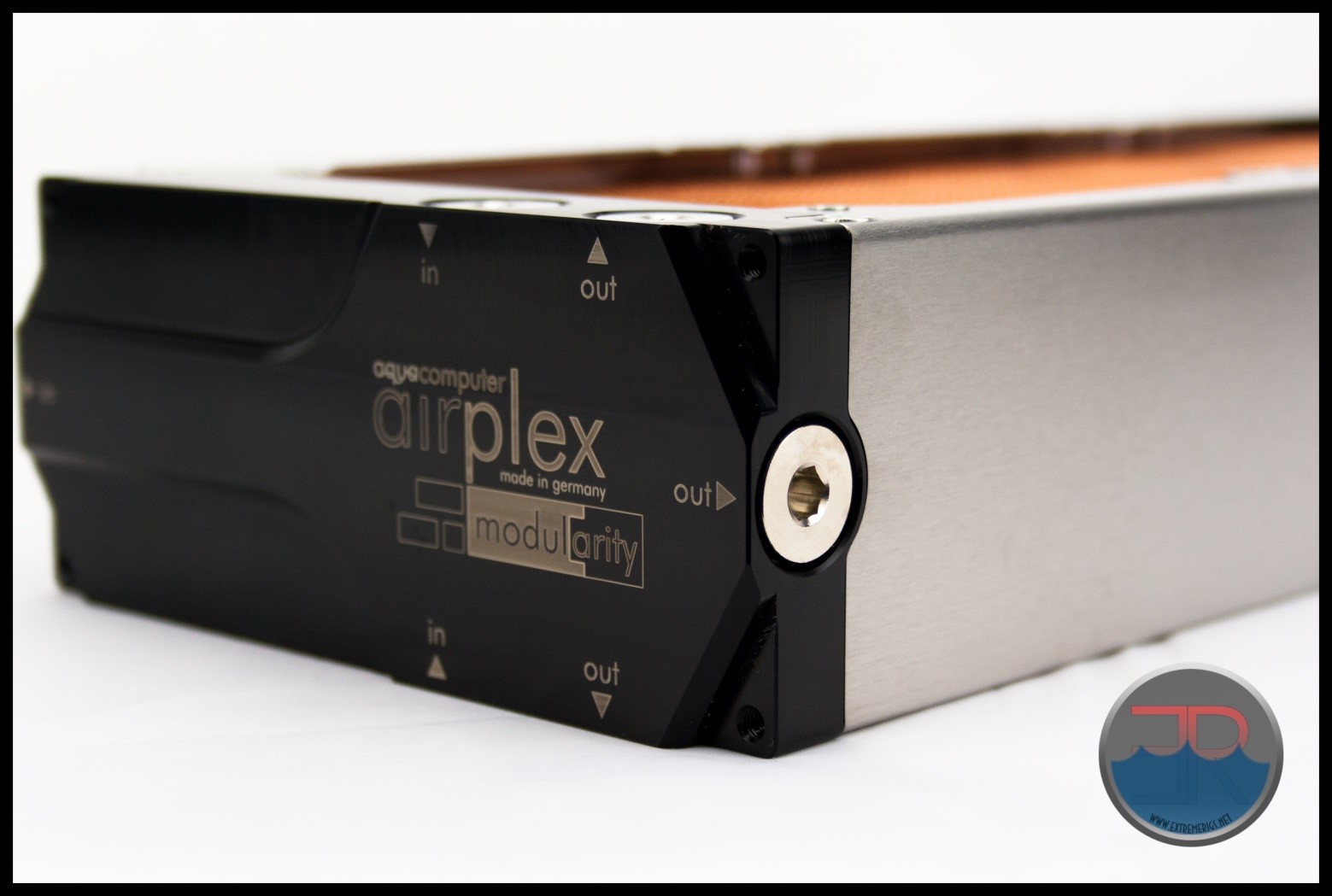
There are no ports on the ends of the terminals, but there are ports on the sides. These port locations are unique to the AMS (I think) and should come in very handy as fill/drain ports for users who have side mounting radiator installations in mind.
The return end terminal has no ports machined. Due to design and flow path they would not be very effective anyway, at best drain or filling half the tubes.
While we’re still on the topic of ports, I must mention the all 6 ports are recessed into the port end terminal. This recessing results in a nice flush finish for unused ports when the port plugs are fitted, and a clean professional look when fittings are used that fit inside the machined recess.
However the recessing of the ports is just 19mm wide.
This 19mm width of the ports means that not all fittings will be usable without the use of short extensions. So consideration of fittings you intend to use is advisable. In the next photo it is clear to see that a Bitspower 3/8 x 5/8 compression fitting which measures 21mm across will not fit directly into the recessed port. It would have been nice if the necessary extensions to use such common fittings were included.
As mentioned previously the terminal ends are each machined from single pieces of Delrin which really is an amazing piece of design work – and precision machining. This particular parallel flow path is a design feature unique to the AMS. As with the Radical 2’s parallel flow path my concern with this design is whether or not the flow can remain turbulent or if will drop flow rate to be laminar and significantly reduce cooling performance. We’ll see in the performance results later.
So we have a beautifully crafted radiator which certainly brings some good looks to the table. There are some interesting and unique design features but to counter these positives there are a few design features which I feel could alienate the AMS from some potential users.
Let’s see how it performs….
Flow Performance
The Data
As all the testing in this round up was performed with the exact same equipment, using the exact same methods I have decided to keep each radiators page uncluttered by posting our testing methodology, test set-ups and equipment used in a single location. To see exactly how the tests were carried out, details of the test set ups and equipment used, please head back to the RRU Test Setup page.
Restriction Test
It’s generally agreed that radiators are one of, if not the least restrictive components in the water cooling loop. There are some exceptions however, so this must still be verified through testing:
The above photo is for referencing the restriction test bench. The AMS is not loaded so please disregard the data in the picture as it does not relate to the AMS test results.
Here is the raw data at the tested flow rates, displaying the measured Differential Pressure across the radiator as flow rate was increased.
The table numbers indicate that the AMS is a high restriction radiator. However numbers in isolation can only tell half the story. By plotting against other components it more easily shows the whole story. I have decided to use a HeatKiller 3.0 CPU block as the reference in these plots for two reasons. Firstly there is no chance of the plot being cluttered by curves overlapping and secondly it gives a reference point against a fairly common loop component of average restriction. As with all the radiator restriction plots I have limited the maximum flow rate displayed to 2.0 GPM as I suspect there are very few systems that operate above 2.0 GPM. For more information on how to read a restriction plot check out our guide.
This plot confirms the AMS as a high restriction radiator. Generally we do not see a radiator’s restriction data plotting anywhere near the reference CPU results.
The next three plots show the AMS’s restriction level relative to other radiators in the test group. Normally I show just the 1.0 gpm plot, but on the AMS it was interesting that as flow rate increased so did the restriction level relative the other radiator results. This increase was enough to make it the most restrictive of the test group at a high flow rate.
Onwards to Thermal Performance!
Thermal Performance
The Thermal Data
Moving on from the restriction test bench the Aqua Computer AMS was loaded into the thermal test chamber for a series of tests – consisting of 3 flow rates, each having 3 different fan rpm rates tested. I felt the thermal test data was most important and which you as the reader would be most interested in.
Below is the final data results gathered from at least 2 data logging runs at each flow rate and fan rpm combination. The most stable 15 minute period from each logging run was used and then averaged with the other runs to obtain the data for the table below. A total of 16 temperature sensors were used in the thermal test chamber (8 air in, 2 air out, 3 water in, 3 water out) each take a reading every second and logged via a CrystalFontz unit. The data in the table below is the result of the logging runs which has then been used to create all the plots and tables there-after.
The performance metric of critical importance is the delta between the warm coolant temperature in and the cold ambient air temperature in to the radiator. Given that the system is well insulated and in equilibrium and we know the heat input to the system then we can also calculate a very important number – that is the amount of power required to raise the coolant temperature 1C (or 10C which is more useful reference point).
First tested was the Reverse Flow. As previously mentioned, reverse flow on NON U-Flow rads proved to be worse performing, so I decided to only test Reverse Flow with Push Only fans, and allow more time for the better performing OptiFlow.
At a later date the AMS was reloaded into the thermal chamber with a slightly reconfigured tubing arrangement to accommodate the OptiFlow testing. Comparing the Reverse flow results above to the Push Only results below, it is clear that OptiFlow again performs better. So from here on only the OptiFlow data for the AMS will be posted.
Let’s take a look at the Delta T results from the tests, in bar chart form first:
While the numbers seem a bit strange at first glance you have to remember that the pump power also changes for each flow rate which changes the total power dissipated by the radiator. Things will be clearer once we factor in the total power dissipation.
The plot clearly shows the 1.0 gpm Push only yielding a lower delta temp than the 0.5 gpm Push/Pull at higher fan speeds which indicates that the lower flow rate may be affecting the thermal performance of the AMS when airflow is no longer the dominating factor. To really analyze this data though we have to look at how much power was being dissipated in each case to really compare in an “apples to apples” fashion.
Delta T results (as above) are not always helpful when thinking about how many radiators you would need to cool your system. Instead it’s more useful to know the delta/W, or more usefully, the inverse metric of W/delta C. The metric plotted below tells us how many watts are dissipated by the radiator when the coolant rises 10C above ambient temperatures. (10 Delta T):
This seems a good a spot as any to mention that the OptiFlow testing on all the rads that could benefit from it produced some results that were not as expected. The AMS was no exception (as seen above) and despite numerous retesting the results left us bewildered at times at the data which was produced. The main cause for bewilderment was the calculated power dissipation result (Coolant Delta x Flow Rate x Heat Capacity) which is then used to calculate the overall performance metric (W/10DT). Some of the discrepancies we can attribute to error margins – that being uncontrollable fluctuations of the test rig such as power fluctuating which can effect fan speeds, flow rate and heater power. However despite many retests and even having a 1000 watt power conditioner between the wall and the PSU there is still something funky with the optiflow push data. I wish I had a proper explanation for some of these results, but at this stage unfortunately I do not. So I am going to present the data and try to ignore the abnormalities that may exist.
As expected increasing airflow through the radiator is the primary determinant in changing the radiators performance. However, we can clearly see that the low flow rate of 0.5 gpm has a negative effect on cooling performance. So much so that a Push only fan set up at 1.0 GPM outperforms a Push/Pull set up at 0.5 gpm with medium and high speed fans.
This data can now be plotted as a pretty curve so that an end user can interpolate their own fan speed. Note again that the extrapolation of the curve is much more sensitive to error than in between the tested range. Let’s exclude the push data for now and come back to it:
These plots make it easier to see that at higher fan speeds that a low flow starts to impact the cooling performance. This makes sense if you take it to the extreme and think about a very low flow rate where the coolant is already cooled 99% of the way to ambient with 10% of its journey through the radiator. In this example the radiator is not being efficiently used. 90% of the radiator surface area would then be wasted and you could have used a smaller radiator. Both coolant flow and air flow can limit thermal performance, however in typical systems coolant flow is a much weaker effect than airflow due to typical choices of fans and pumps.
If we now come back to the push data it’s good to compare only the push to push/pull data in an “apples to apples” fashion by only looking at the 1GPM data:
Push Only gives around 94% (averaged) of the performance of the Push/Pull 1.0 gpm test results on this radiator.
Having said all of this about flow effects they are in reality small. So in this next plot all three flow rate results were averaged together to produce one curve. Averaging reduces test error of course so this helps further to be sure of our data and is more useful therefore for comparing to other radiators.
Here one of the top performing and worst performing radiators from group 1 of the round up have been plotted along with the OptiFlow results to see how the AMS compares against them.
As you can see the AMS performs worse than the the worst performing radiator from the Group 1 testing when the fan speeds start to increase. This is not good, not good at all!
Now let’s analyze that data some more….
Analysis
This first table shows the AMS’s Watts/10 Delta Temp numbers in a quick glance table format.
Using the data compiled from the Aqua Computer AMS 360 thermal testing I have compiled the following tables in an attempt to show other ways of how its performance varies against itself at the flow rates and fan speeds tested. Effectively these show percentage gains relative to a reference point. It’s an interesting way to show gains/losses while changing a variable.
First let’s focus on 1300 RPM as our reference and see how much gain or loss in performance we get by changing fan speed.
While 25-30% may seem like a decent change at first, it’s much less than other radiators which is why the colors are quite neutral and not green or red. In other words the AMS radiator just doesn’t scale well with airflow. In the next table we then focus on the effect of changing the flow rate with 1.0 GPM as the base line:
Here we can see that as expected flow rate matters only a small amount, but matters most as airflow grows. How about we combine both flow rate and fan speed as reference points and have a look at 0.5 GPM & 750 RPM as the reference point:
Interestingly we can see that if you ran 1300@0.5GPM you could gain similar performance either by turning your fans up to 1850RPM or by turning your pump up to 1.5GPM. Lastly, we change the reference and choose our centre 1300 RPM and 1.0 GPM as our reference point to show both effects concurrently:
So from the data above we can get a very good idea of how the AMS 360mm radiator performs relative to itself. But there is a large selection of 360mm radiator models to choose from, released from numerous manufacturers. So, we need to start comparing performance between them. To see how the AMS performed against the other radiators tested, I have included the averaged flow rate comparison charts from the Round Up. We know that the flow rate has little impact on thermal performance so averaging of the 3 flow rate results gives us a good look at head to head performance at the rpm speeds tested at with even less error.
Push Only Data vs Competition
Let’s focus on the Push Only results for now and come back to the Push/Pull data later. While for Push/Pull we tested three flow rates, the Push Only testing was conducted only at 1GPM in order to save time.
Let’s start with 750RPM and see how it compares to the competition:
So we have discovered that the AMS performs quite well here. In 7th place it was ~ 5% behind the category winner.
Let’s see how jumping to 1300 RPM Push will change things:
It seems the low fin count of the AMS has caused the performance to drop dramatically with the increased air flow. In reality of course the AMS still does better, but the other radiators performance improved much more dramatically with the increased air flow, leaving the AMS in their wake. In 3rd to last place the AMS was now 14% behind the category winner. I think we can guess where the 1850 RPM results are heading.
Yes, the AMS slipped again. Finishing in 2nd last place, a whopping 20.5% behind the winning rad.
So in Push Only the AMS 360 did at least perform well at one data point – 750 rpm.
Push/Pull Data vs Competition
Now let’s take a look then at the Push/Pull data. For Push/Pull we have averaged the results from the 3 flow rates at which we tested. If the trend from the Push Only results continue, this will not be pretty:
The AMS finished in 3rd last place in the Push/Pull low fan speed category, ~12.5% behind the winning rad. This is disappointing given the Push 750 RPM data was not horrible. The second row of fans clearly favors the “flat” tube style radiators. 1300RPM will surely make things worse:
In the 1300 rpm category the AMS is second last only besting it’s slimmer stable mate, the Radical 2. The AMS is now around 23% behind the category winner. There is just one more nail in the coffin to go – 1850 RPM:
Finishing in 2nd last place again, the AMS is now around 31% behind the high speed fan category winner. The next plots were put together using all the fan speeds at only the 1.0 gpm flow rate with both Push Only and Push/Pull fan assemblies so we can see where the AMS placed in the grand scheme of things. By now it should be clear what to expect but it’s interesting to directly compare Push and Push/Pull performance:
750 RPM and 1.0 GPM – Push & Push/Pull data merged:
At 750RPM then the Push/Pull AMS is already being beaten by three radiators with only push fans. The best AMS result – 750RPM push only does however itself beat one radiator with push/pull fans – it’s stable mate the Radical 2.
1300 RPM and 1.0 GPM – Push & Push/Pull data merged:
No surprises here at 1300RPM the AMS always lagged behind the competition. Finally let’s take a look at the merged data for Push and Push/Pull @ 1850 RPM @ 1.0 GPM.
This plot really makes it clear then that the AMS 360 is a simply a poor performing radiator. While not the worst of the test group, it was not far from it at every data point that we tested at in Push/Pull configuration. The AMS just cannot dissipate the same amount of heat from the coolant as the other rads in the test group.
From all of these results we can create a “master performance factor”. The radiator with the best cooling ability (W/10ΔT) at each gpm/rpm combo was awarded a score of 100, and each other radiators W/10ΔT result was scored as percentage of the top performer:
All those low numbers and red boxes confirm what was shown previously, that the AMS is not capable of competing with the competition in the heat dissipation department. The 750rpm Push Only percentage numbers do appear better, but it must be remembered that all the numbers are low in this category, so the percentage numbers will be much closer also.
Then all these percentage scores were averaged giving us the Averaged Performance Factor of each radiator. This way of looking at the comparison takes away any advantages that a radiator may have at higher or lower fan speeds and looks at an overall average. While this appears fair it does tend to favor those radiators that are all-rounders and those radiators which do very well at high RPM. Most users should be more focused on their specific use case. Check in the Round Up for performance comparisons at every gpm/rpm combo for even more details and cross comparison results.
First up the Push Only Averaged Performance Factor:
Here the single good 750rpm result boosts the AMS’s ranking making it appear better than perhaps it is.
Focussing on Push/Pull, there were no results which helped the AMS out in it’s Performance Factor ranking.
The AMS 360’s results were second last after averaging – no surprises there given that it placed so poorly at each data point.
It has been shown that that the AMS is a very poor performer and at some stage we have to start pointing towards possible reasons for it. As with the Radical 2, I believe that the large round tubes and relatively flat fins are the reason behind the AMS’s poor heat dissipation (relative to the competition). The AMS 360’s very low fin count of just 8 FPI is most likely another contributing factor.
Whatever the reasons, the thermal performance results are simply disappointing.
Next up – Summary!
Summary
Thermal Performance
Thermal Performance scores are derived from the relevant Performance Factor scores. We set this scale with 75% and below as the 0 mark, with each 2.5% increase from 75% in relative performance adding 0.5 to the awarded performance score.
Push Only Thermal Performance – 2.5/5
The AMS 360 did perform quite well at a single data point, 1.0 gpm @ 750 rpm in Push Only, and that high percentage score helped boost the Push Only score up a bit. At Medium to High speed fans in Push only the AMS was a poor performer relative to the competition.
Push/Pull Thermal Performance – 1.0/5
As we have seen in the data the AMS 360 had very poor thermal performance in all the Push/Pull tests, so it was no surprise that a very low score of 1.0 was generated for it’s Push/Pull score.
Overall Thermal Performance – 1.5/5
The performance rating of 1.5 out of 5 is arrived at from our Combined Average Performance Factor Scale which takes into account all the results from Push only and Push/Pull thermal testing. The unrounded percentage of 82.45 was not quite enough to get the AMS in to the next category – tough but fair enough.
From previous testing of other finned tube rads the expectation was that the AMS would not be amongst the top thermal performers. The low fin count of the AMS added to the concerns, but I speculated that the thicker core should be in the AMS’s favour. The results showed that the lower fin count and thicker core pretty much balance each other out as the results for the AMS were similar to the Radical 2, very poor indeed, with even the slim rads of the test group outperforming the AMS.
Features & Quality – 4/5
Let’s discuss the quality first. All credit to Aqua Computer for designing a truly unique system with the Advanced Modularity System. The best quality materials have been used, the machine work is perfect and the assembly is faultless. There is a reason that German engineering and manufacturing is held in high regards and this radiator does that reputation proud. Credit to Aqua Computer for keeping design and manufacturing of the AMS in house and not outsourcing overseas like so many of the other PC water cooling radiators on the market.
With no form of welding/brazing/soldering on any part of the radiator, The AMS is going to be the cleanest radiator you have ever had to prepare for a custom water cooling loop. This is quite possibly the biggest selling point of the AMS, and one which should not be understated.
While the AMS 360mm radiator tested was not fitted with any of the exotic optional extras, it is worth noting that by selecting different options the end user can incorporate pumps, reservoirs, filters and even seamlessly join multiple radiators together. So while not presented in the review the modularity features of the AMS 360 were certainly taken into consideration for the score awarded.
The AMS 360 has 6 ports for the user to choose from depending on their installation type. It is not fitted with ports on the ends of the “terminals” which are most useful in vertical installations. It does however have ports on both ‘faces” for roof and floor mounts, as well as side ports, which are unique to the AMS and a fantastic addition for side mount installations such as in basements or pedestals.
4 of the 6 ports come fitted with stop plugs. The ports are all recessed though, which means that not all fittings can be used without the use of short extensions.
Some of the thread locations for mounting are located directly over tubes, and not having tube protection plates leaves potential for damaging the tubes if incorrect length screws are used. No mounting hardware is supplied so the end user must take extra care when choosing their screw length. It’s amazing that with such a high price the necessary mounting hardware and port extenders were not included.
As part of Aqua Computer’s Modularity System the AMS 360mm radiator is 146mm wide which is 15mm – 20mm wider than most other 360mm rads. This extra width means that it will not fit in all places that a 360mm radiator would normally be expected to fit, so this must be taken into consideration.
Summary – 3/5
The AMS 360 is a poor thermal performer, there is no way to hide the fact. It did perform quite well at one single data point; 1.0 gpm with a 750 rpm Push Only fan installation, so silent system seekers should be pleased with that result.
Performance enthusiasts are advised to look elsewhere as the AMS 360 simply is not for you. It doesn’t have any hint of thermal performance in it’s DNA or test results. In fact the data may lead you to consider that a single unit may not be sufficient and this is not the end of the world if you have cash to burn and want the bling that the AMS radiator would bring to your system.
What the AMS 360 does have is amazing build quality and a unique feature set. It’s guaranteed to be cleanest radiator ever and is arguably the best constructed radiator ever with possibly the most visual appeal and bling factor.
This quality and design style comes at a cost though – literally. At the time of writing the AMS 360mm Copper was about twice the price of every other radiator in the test group.
So, it’s your decision, Quality and Style Vs. Cost Vs. Performance, -with the AMS you will have to choose which is most important for you.
Where to buy: Aqua Computer – $205 USD + ship from Europe, Performance PCs – $245 + ship from USA







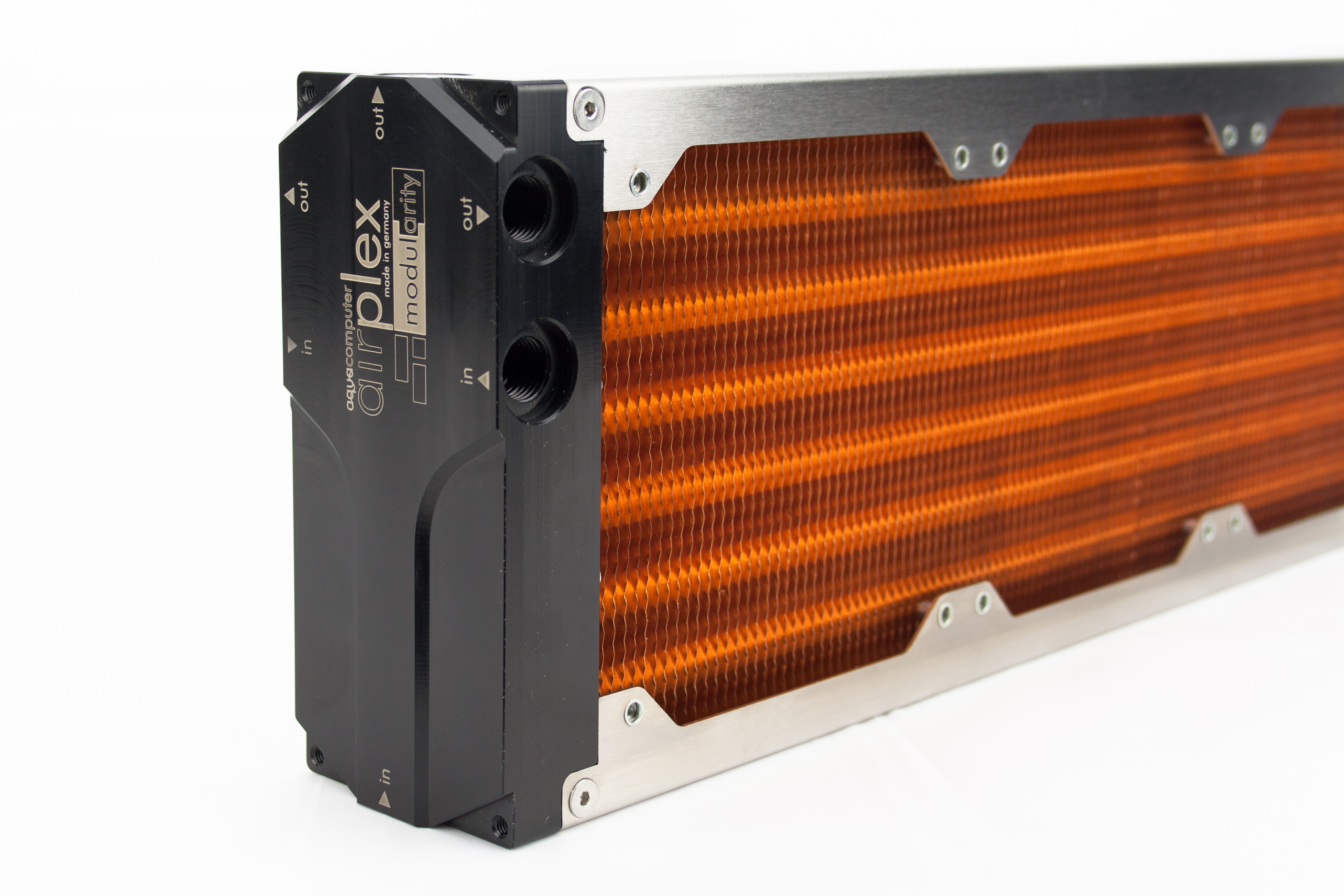

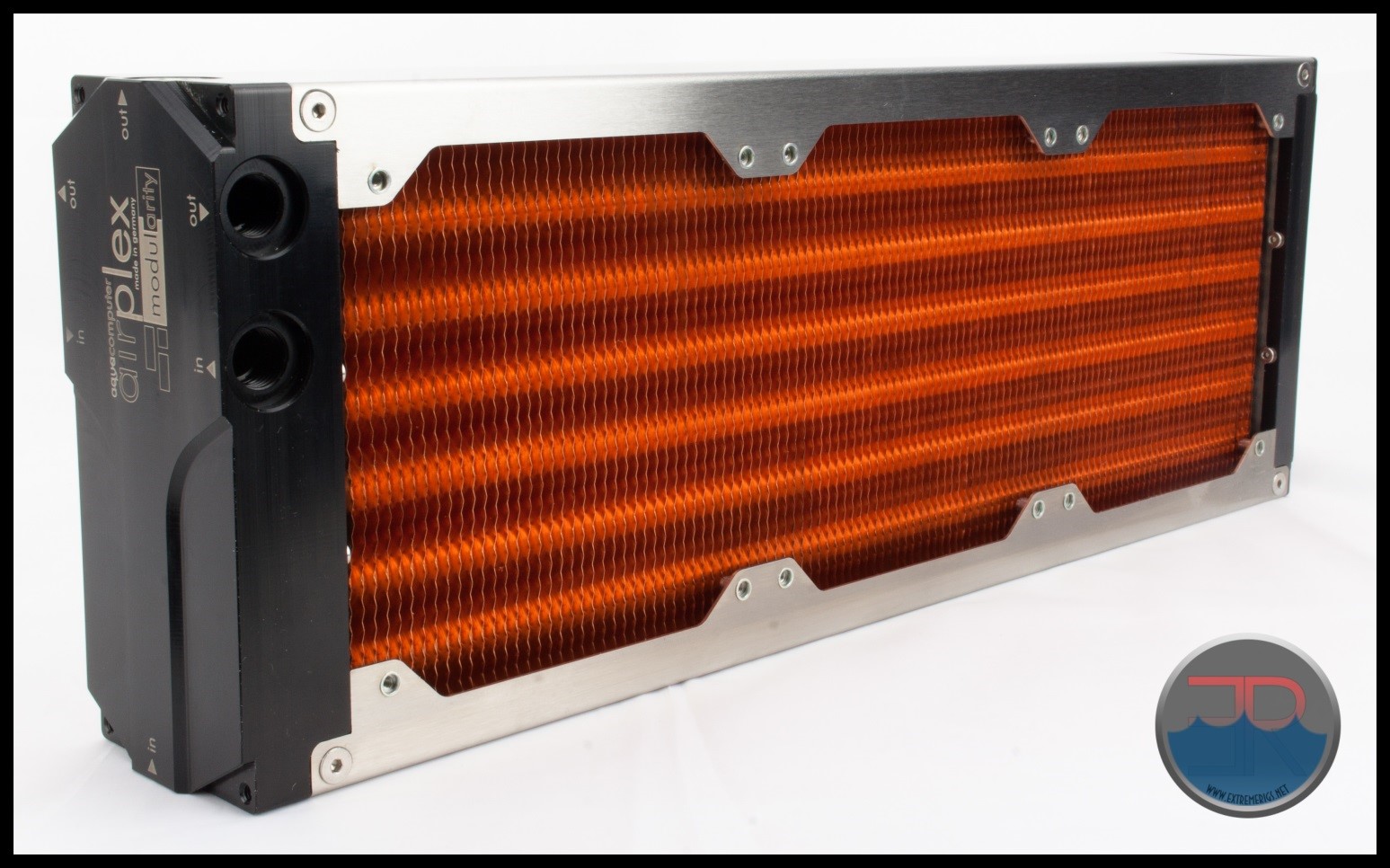
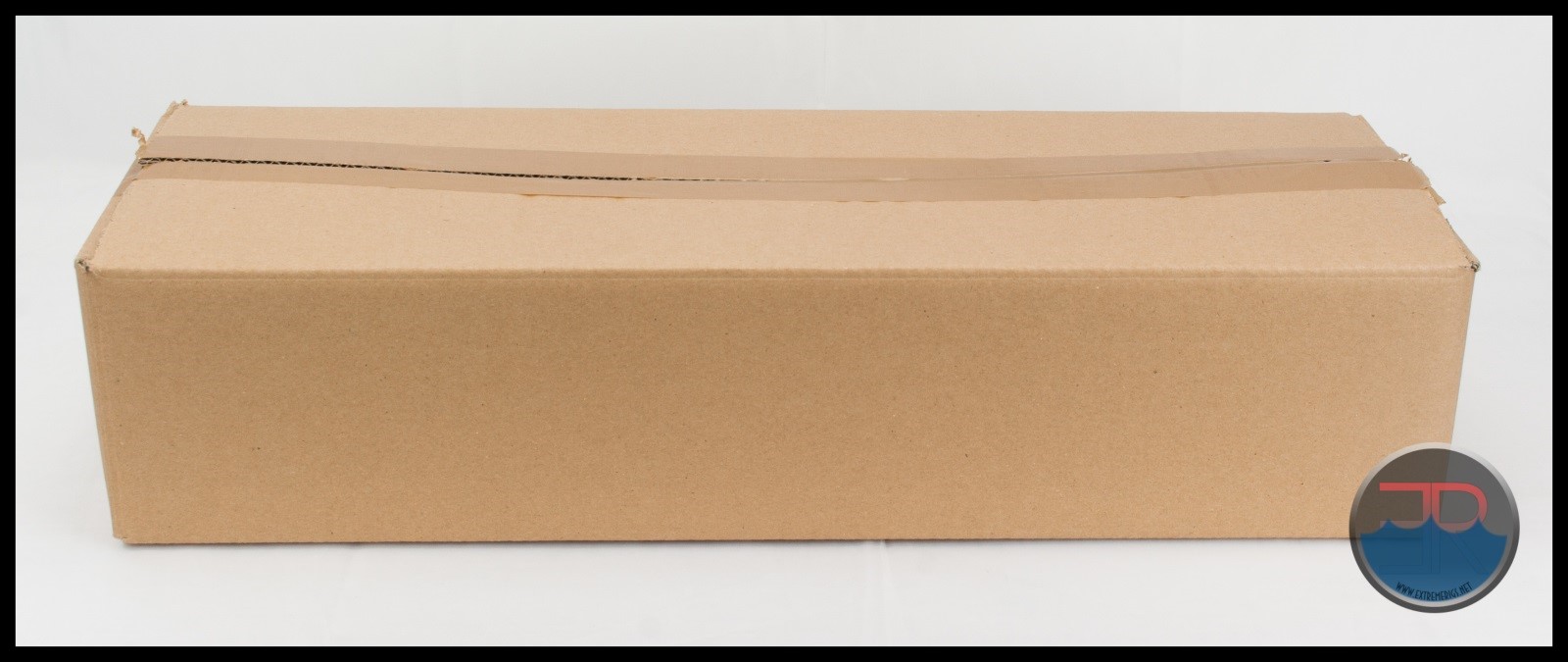
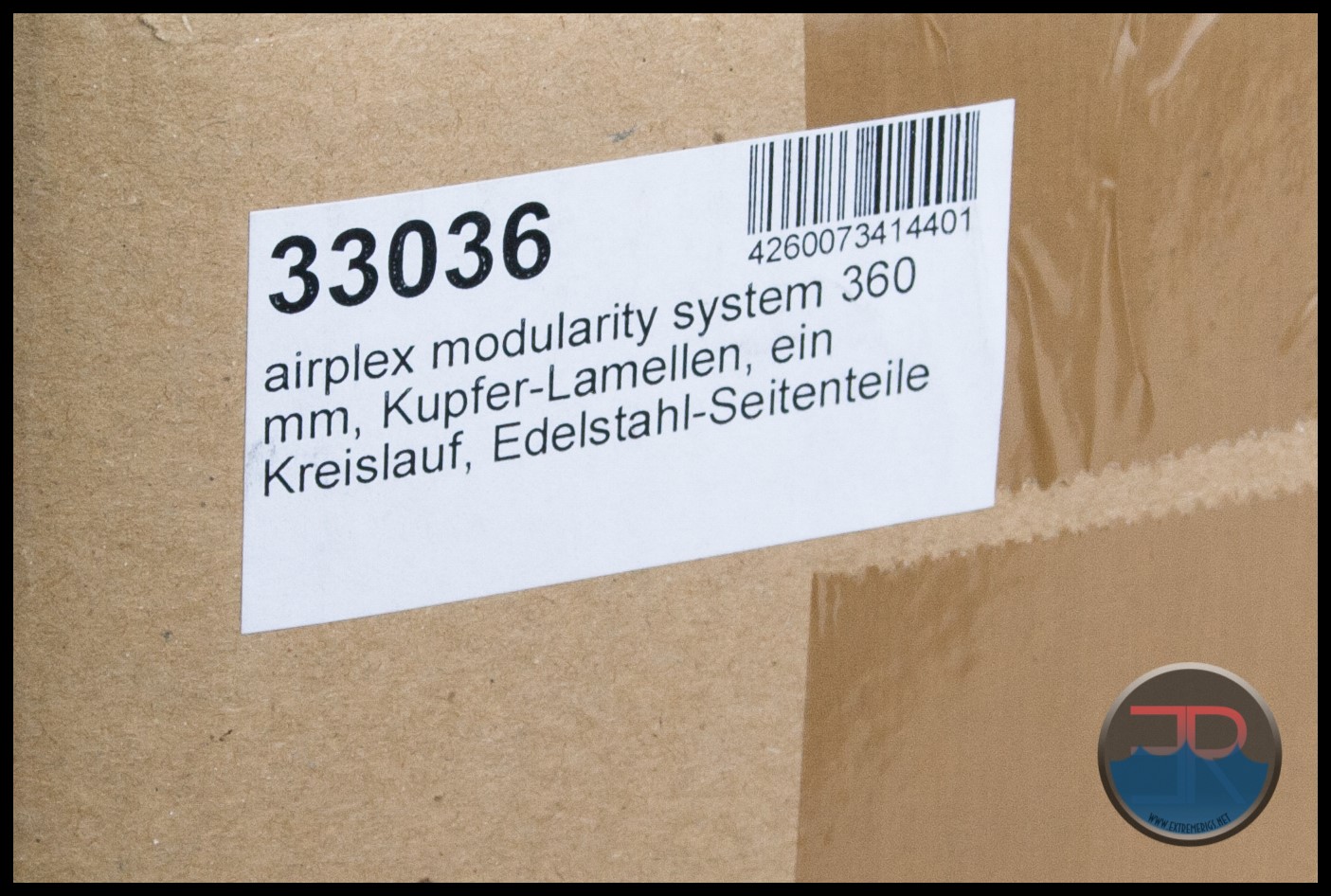
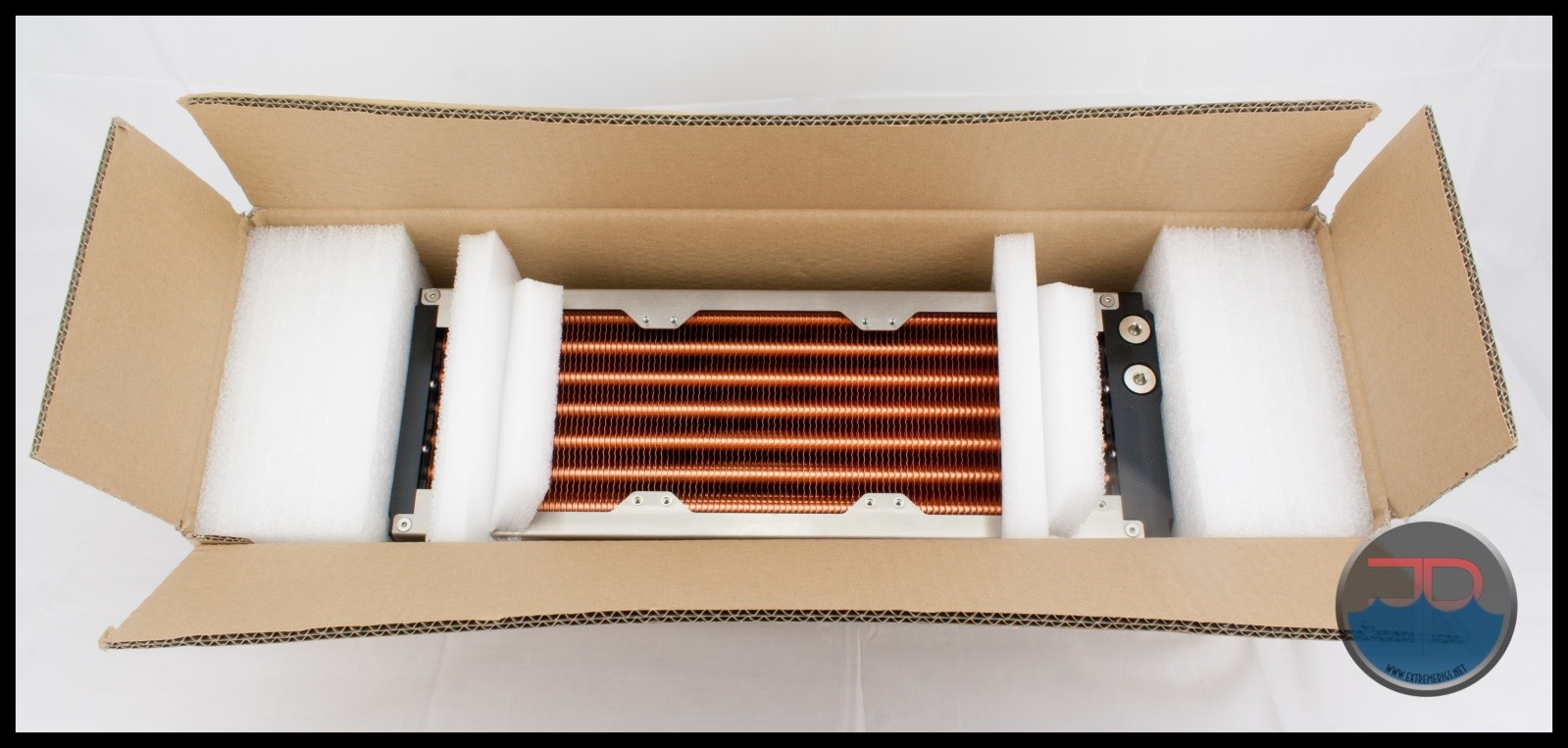


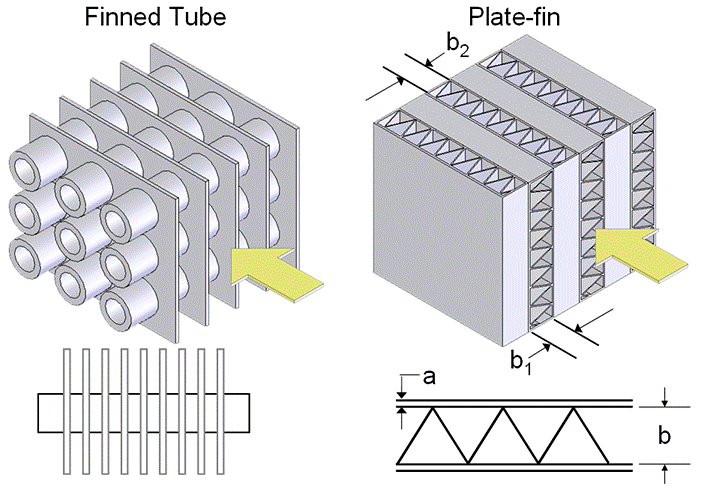
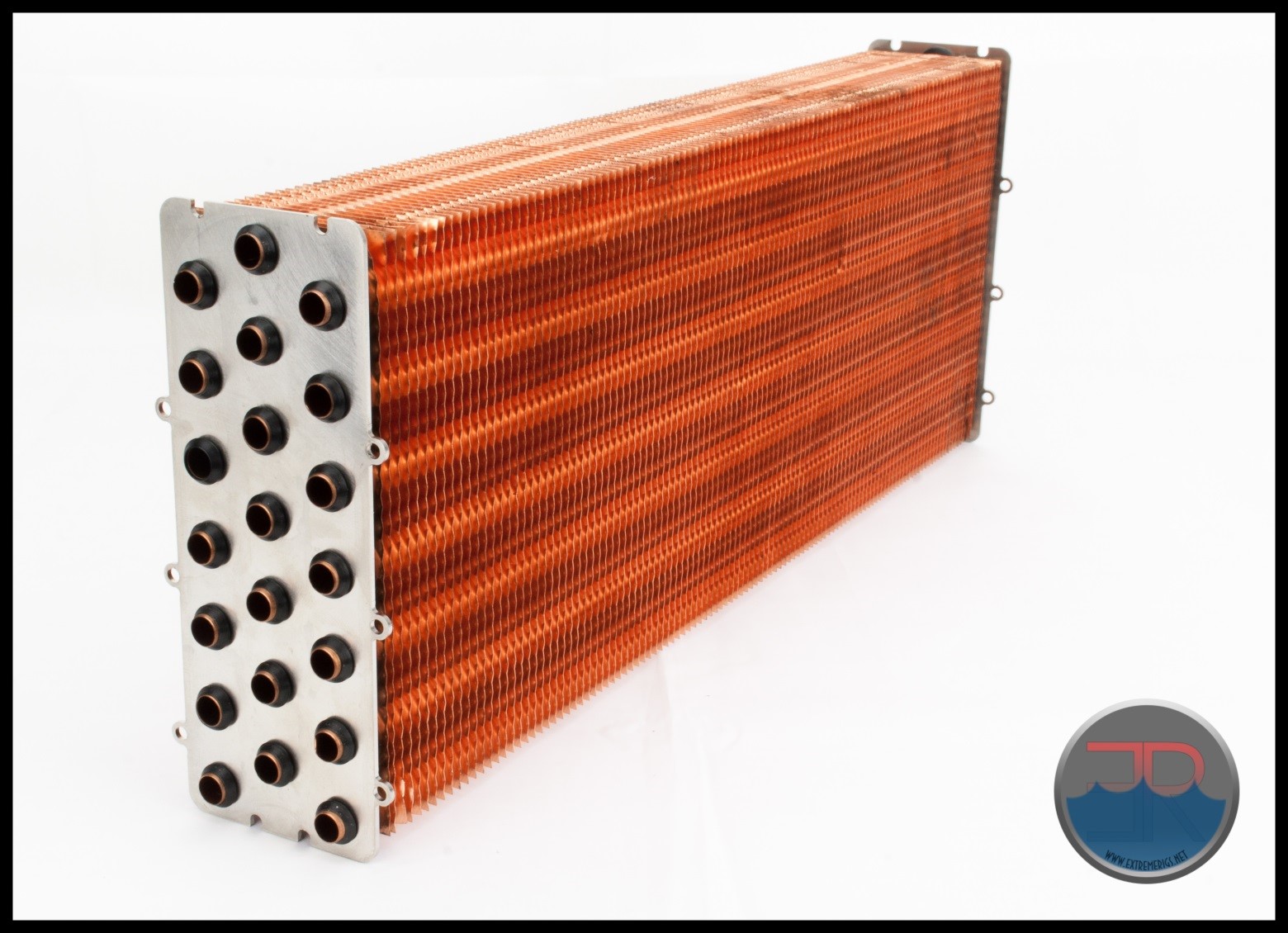
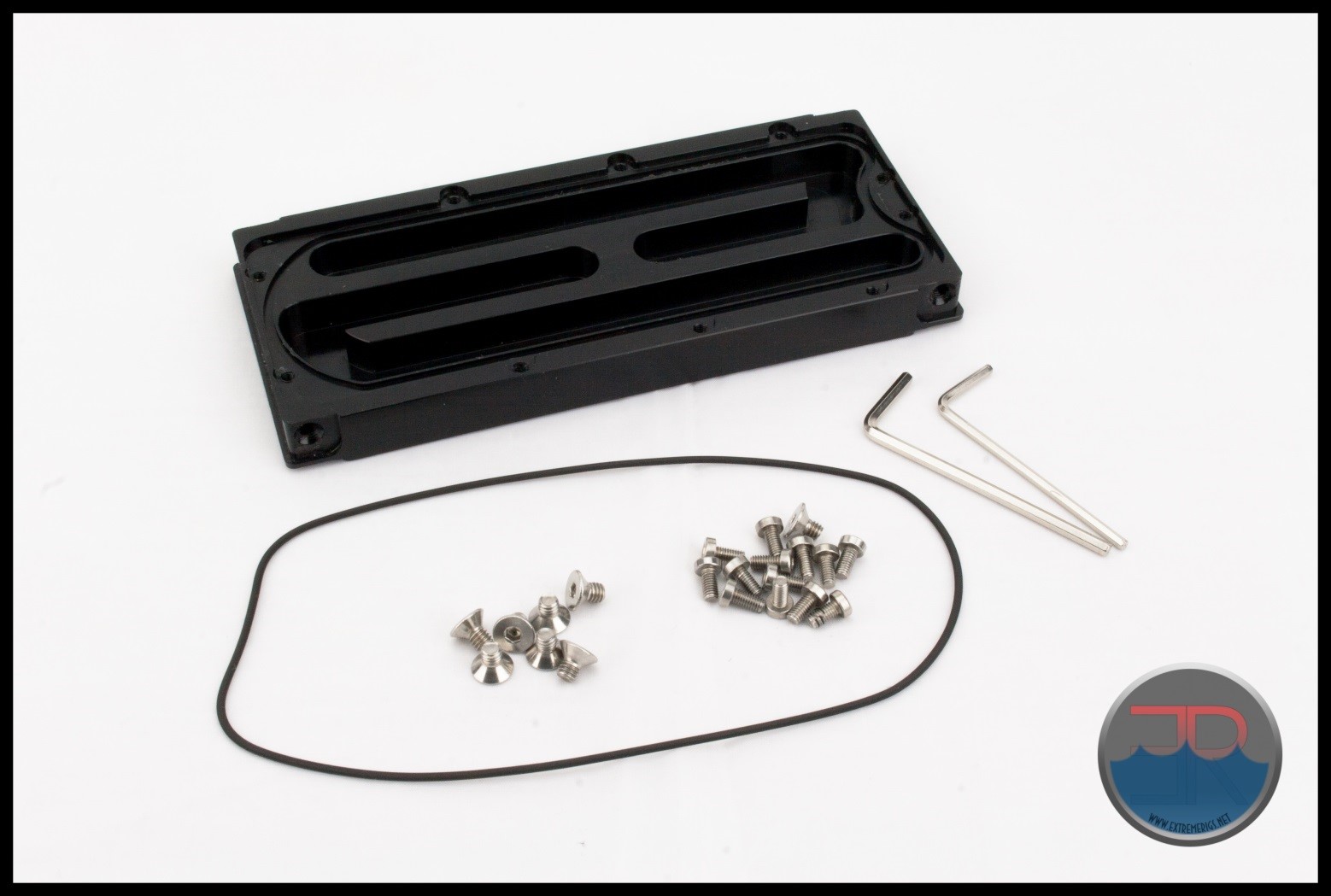
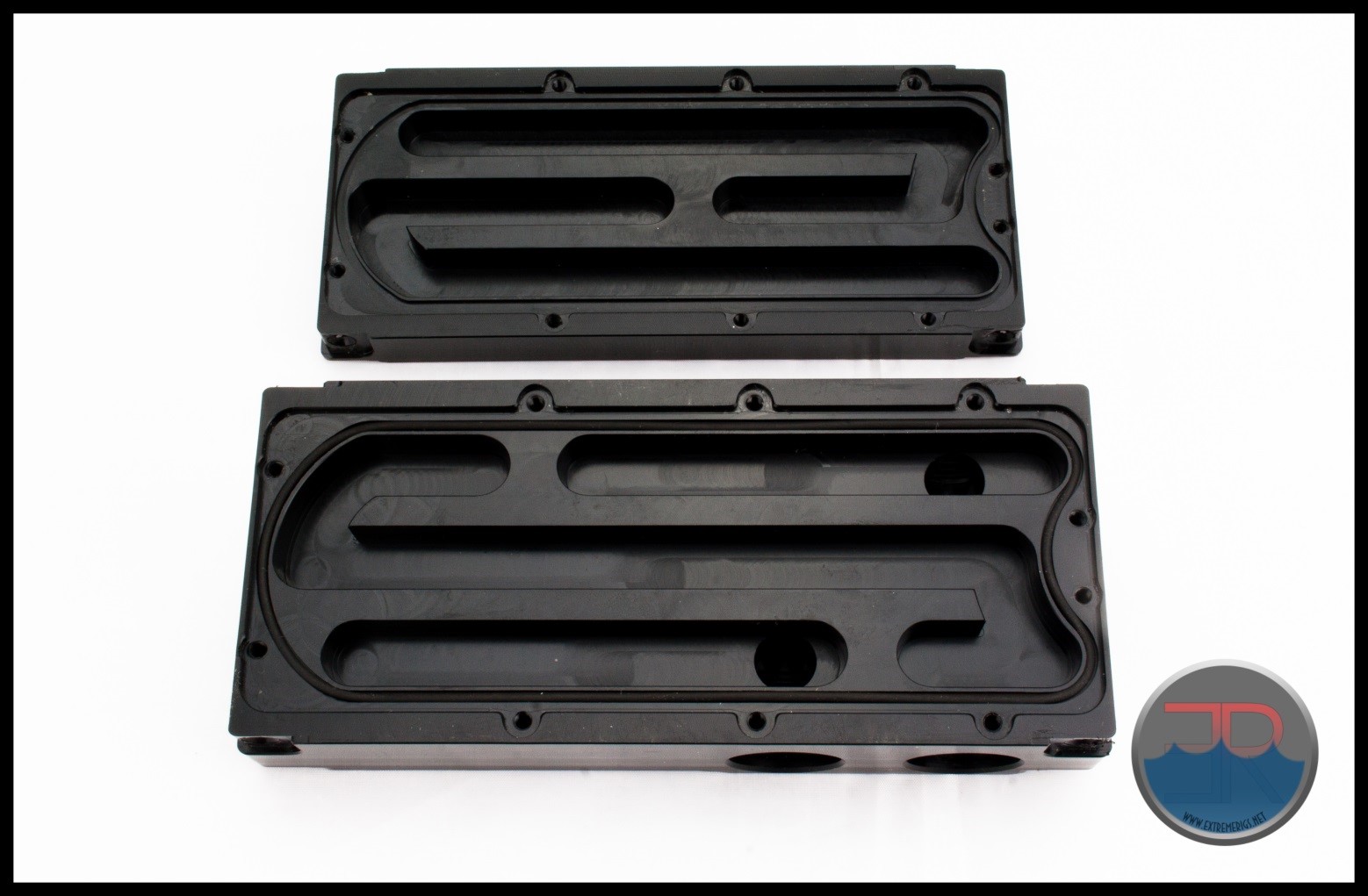
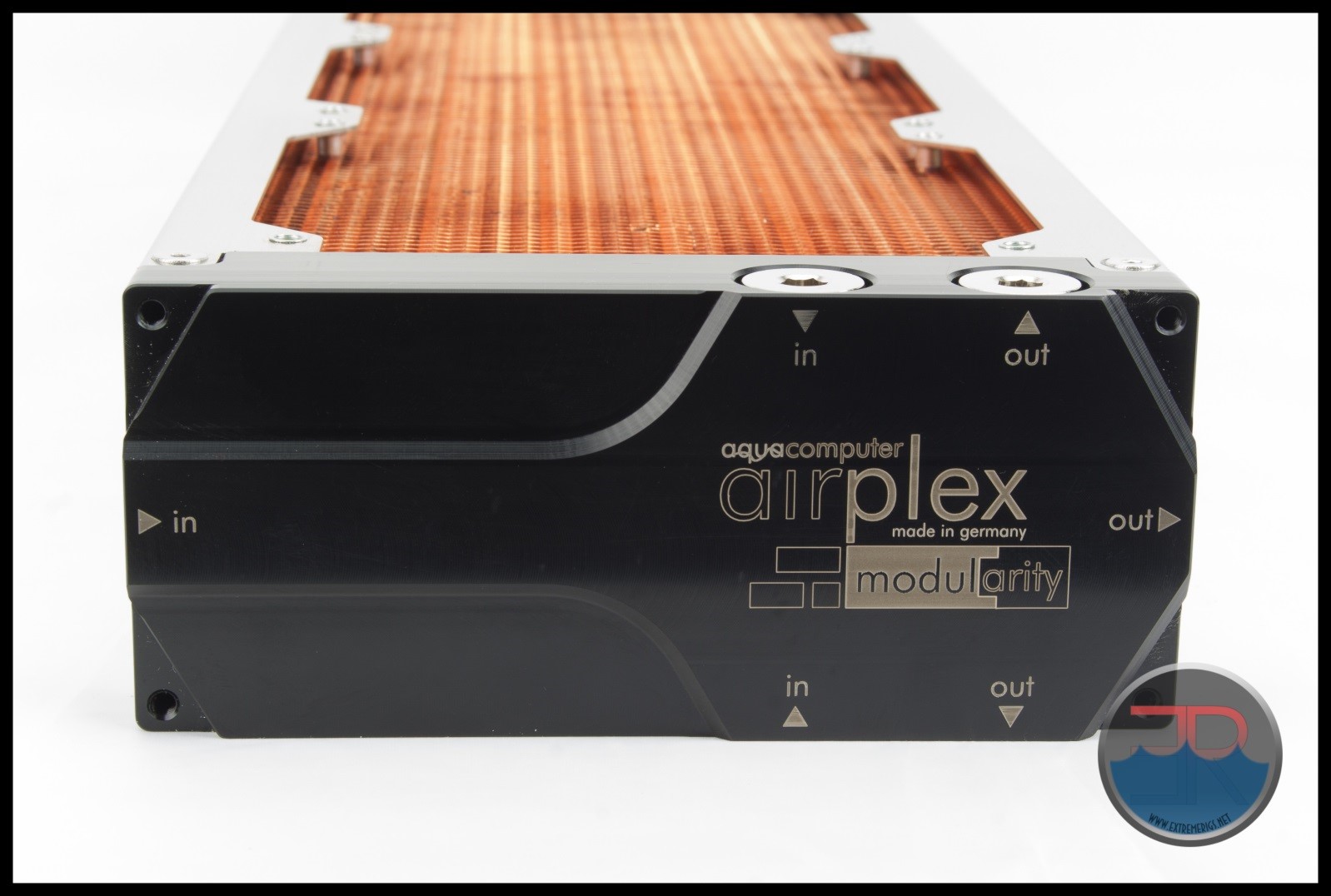
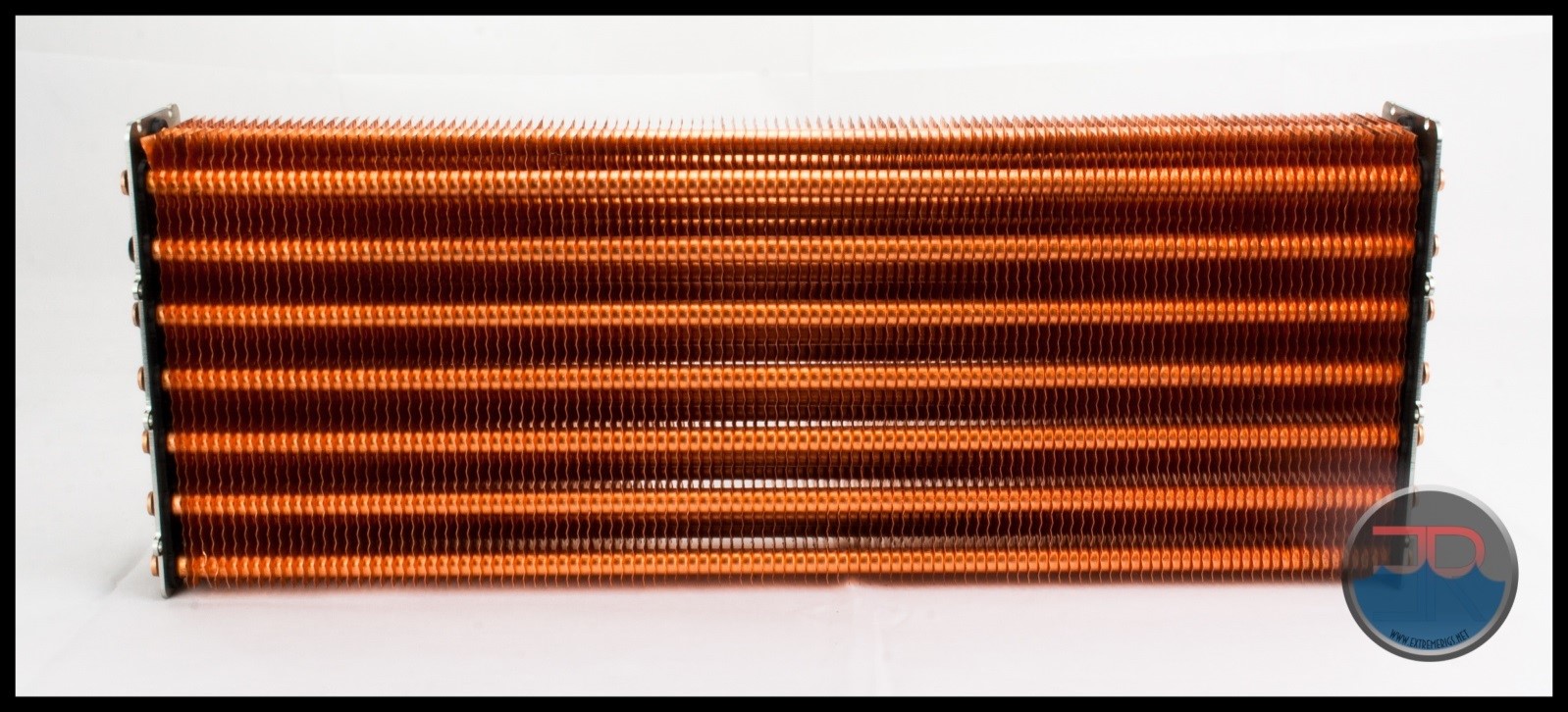
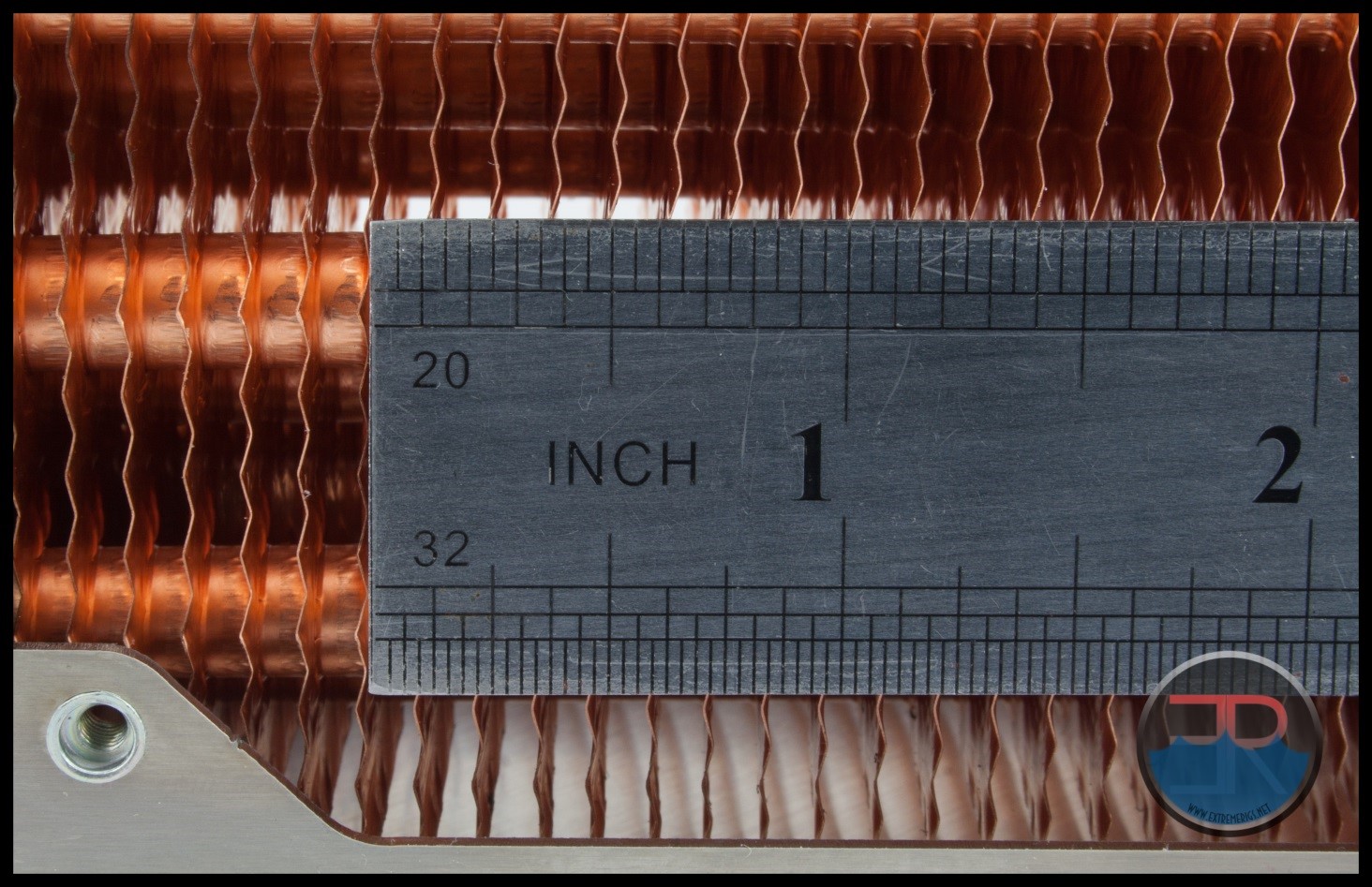
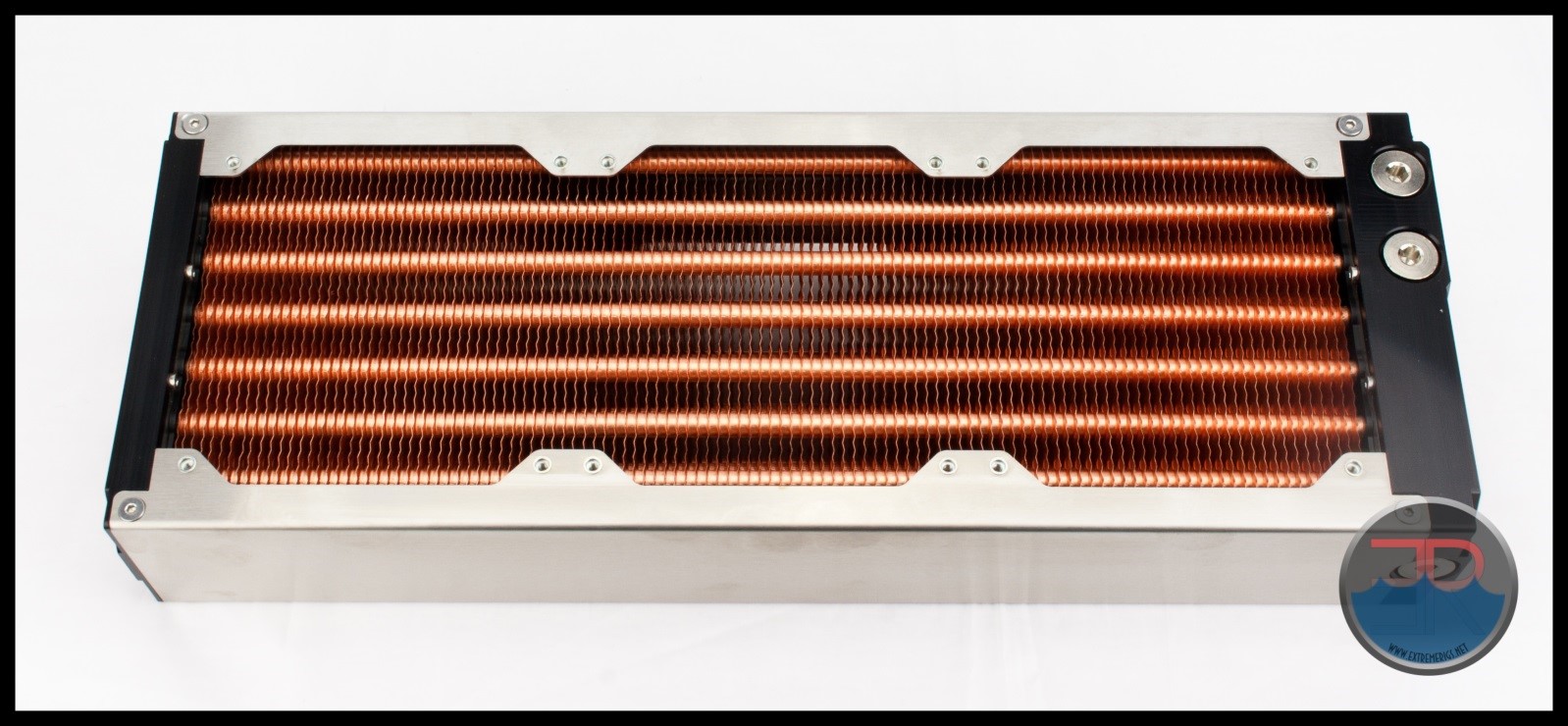
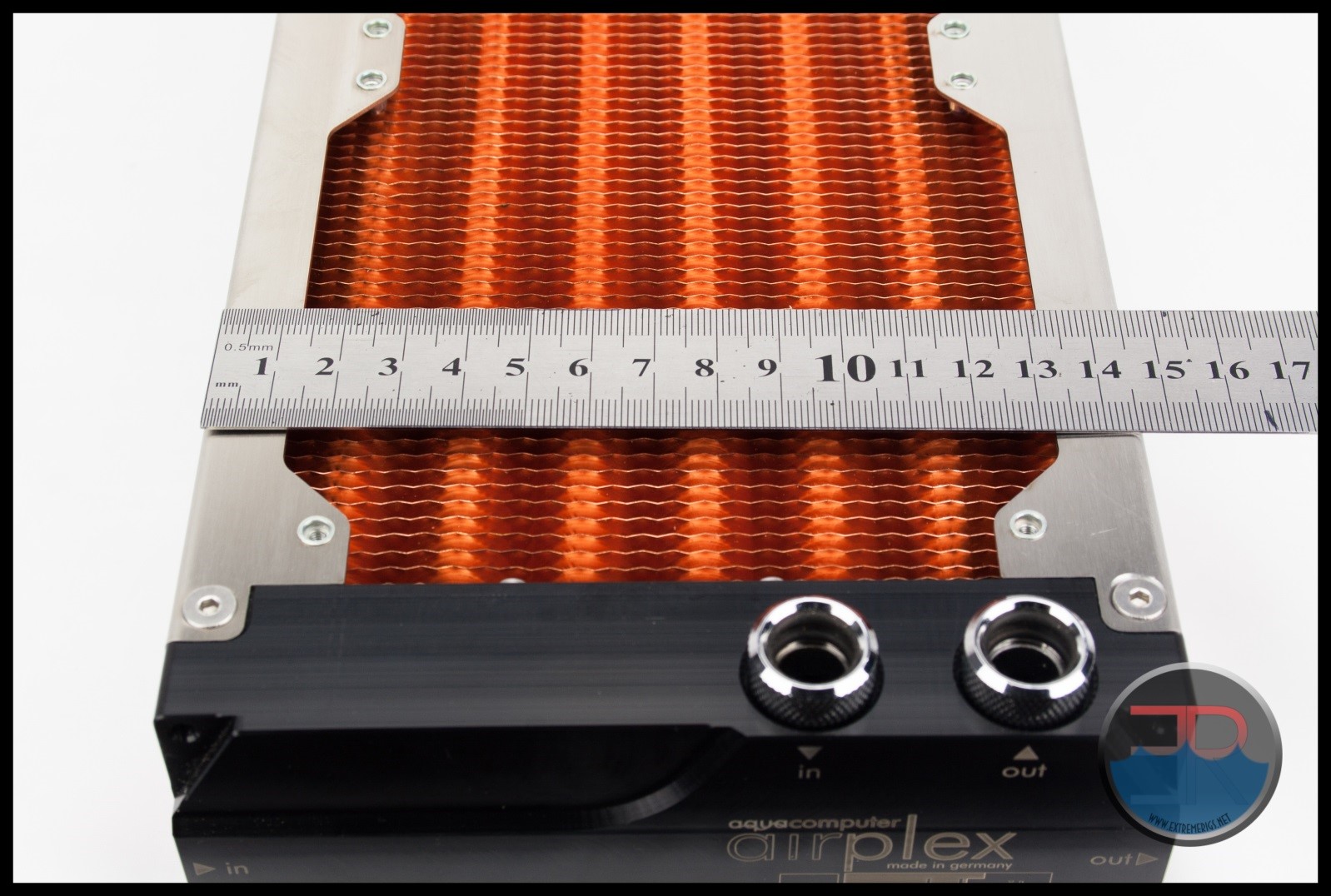
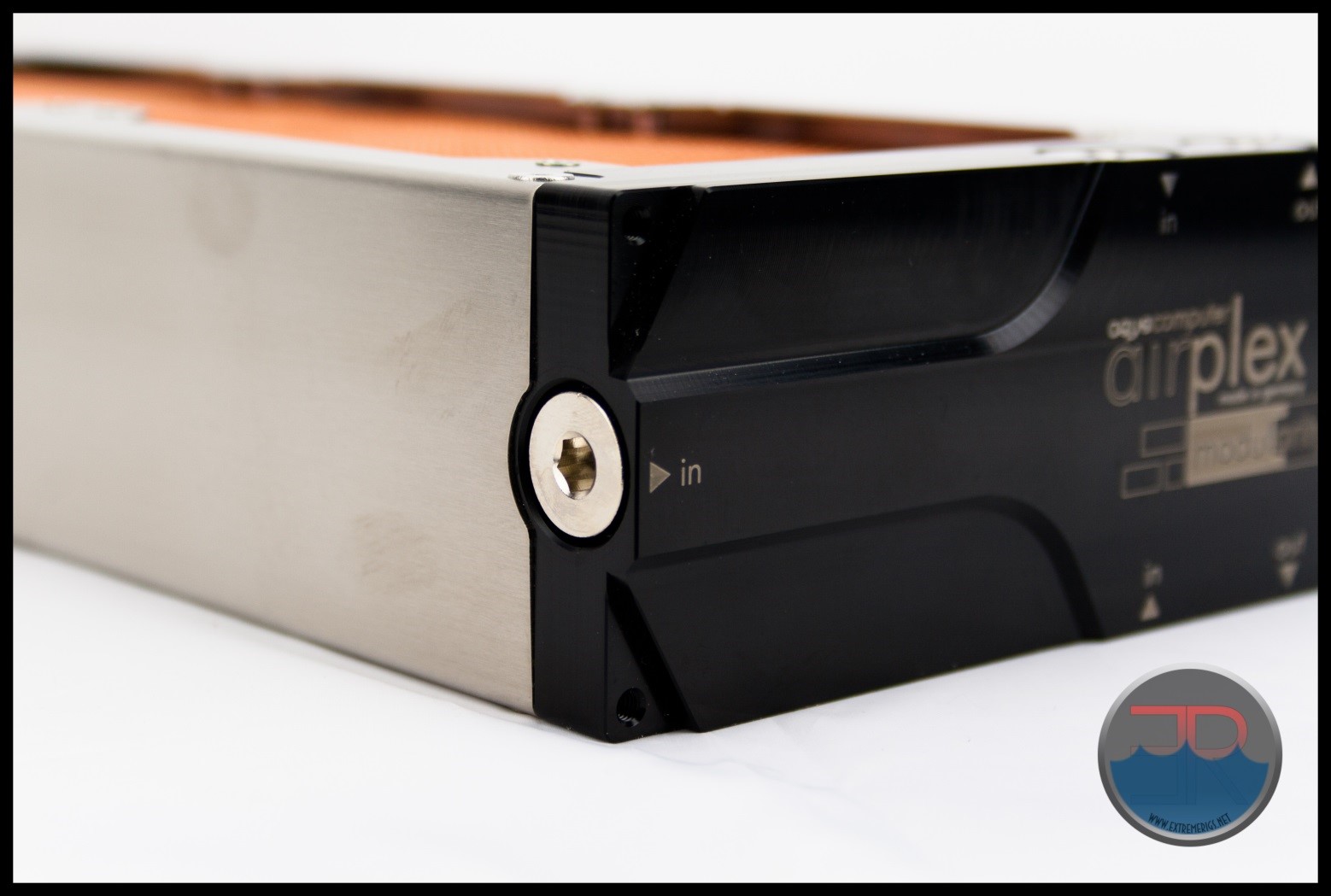
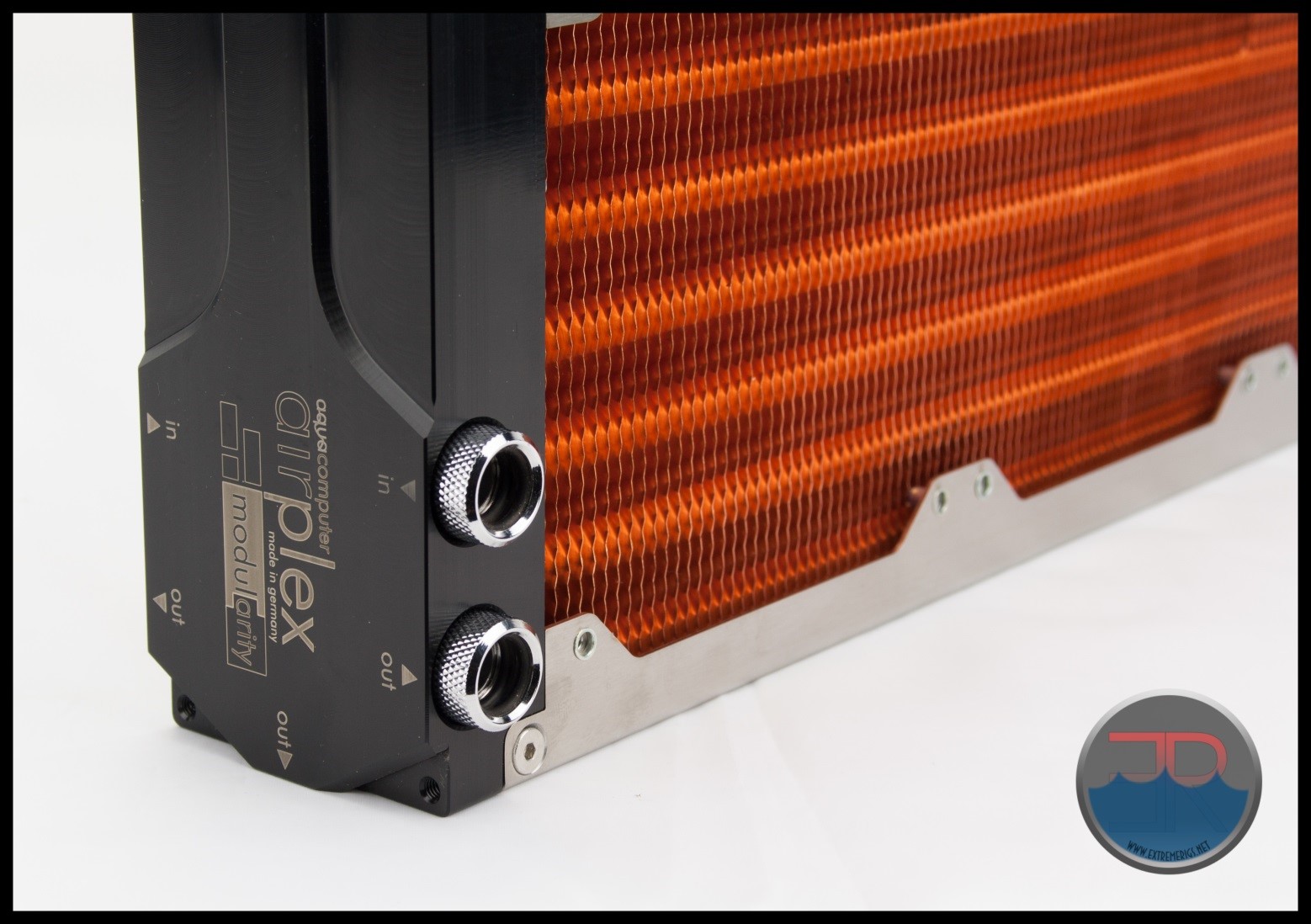
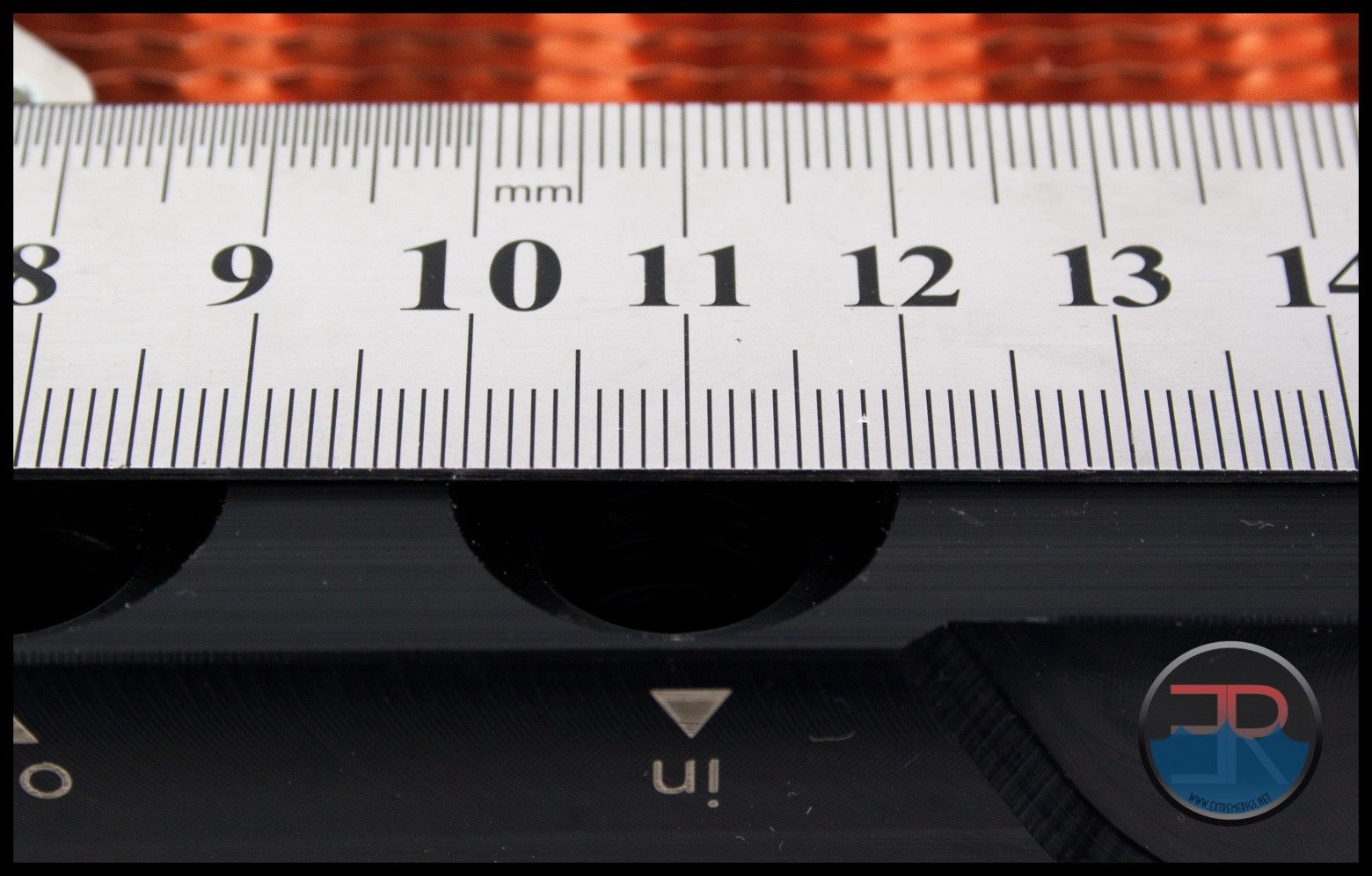
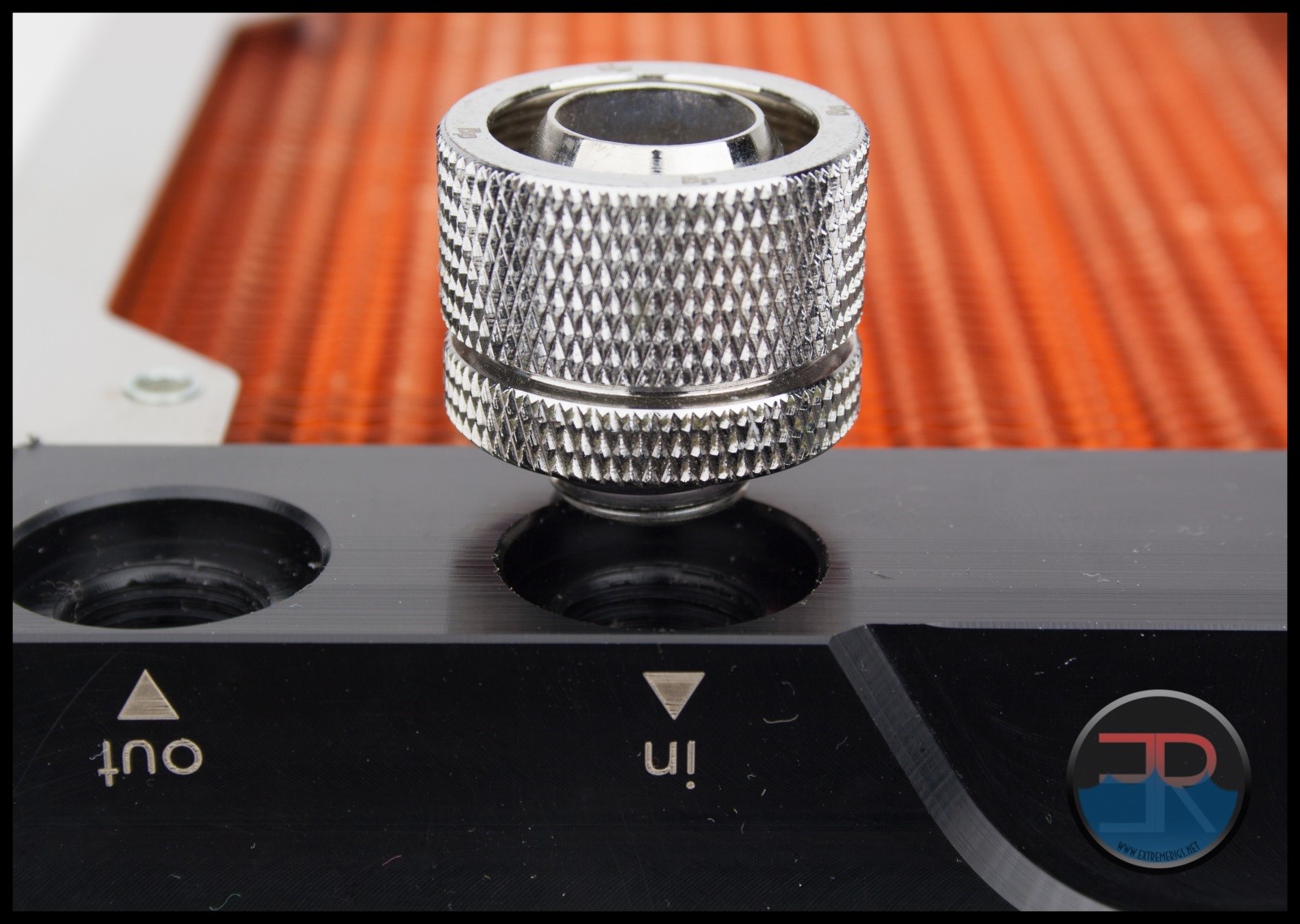
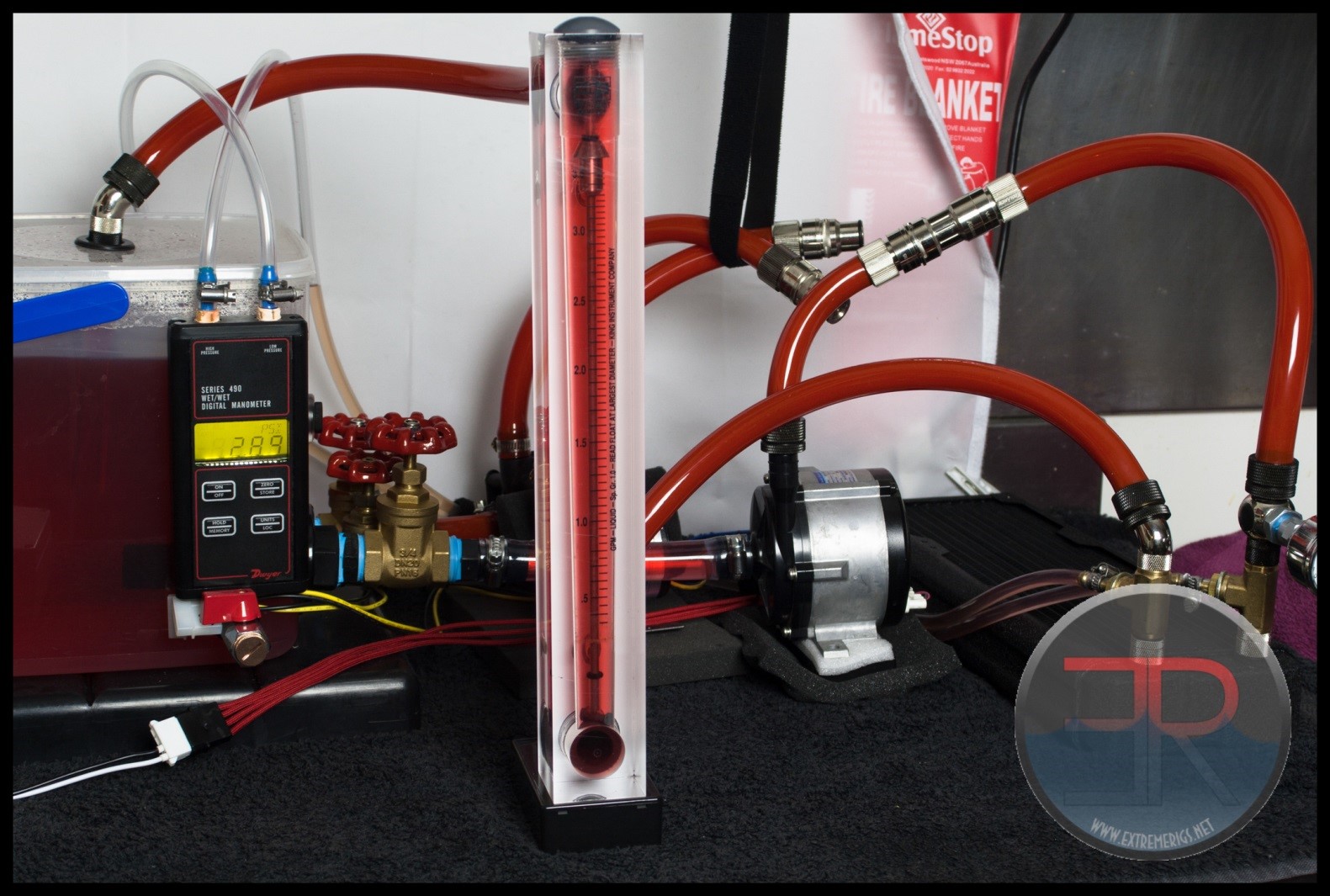
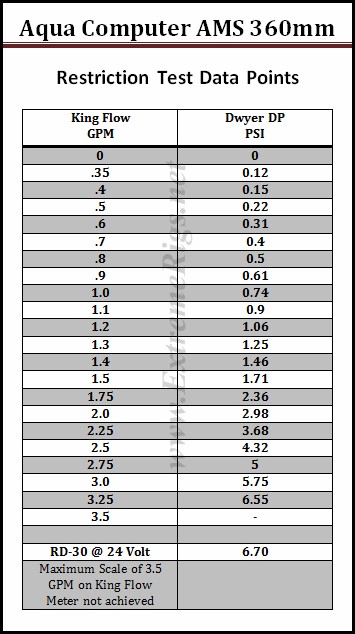
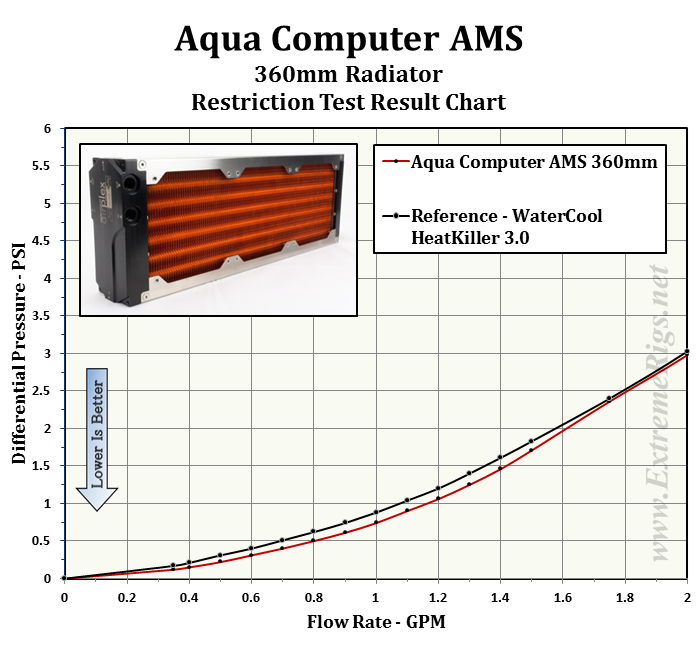
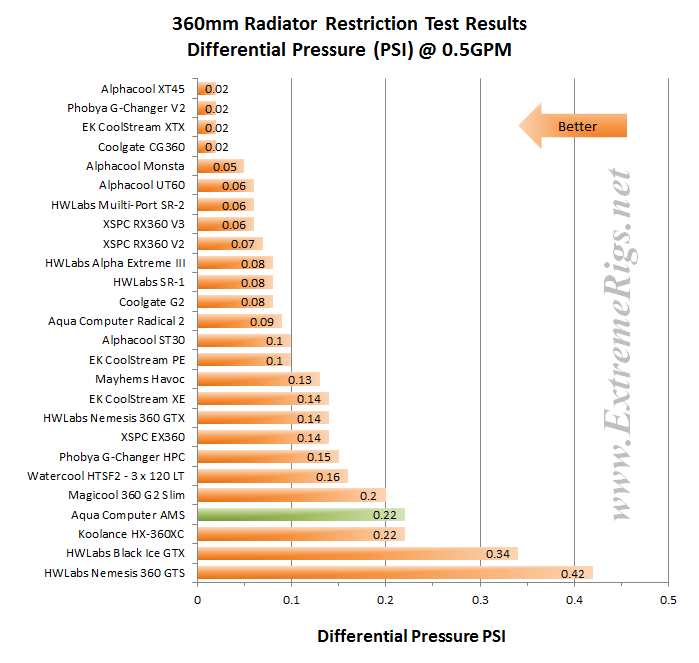
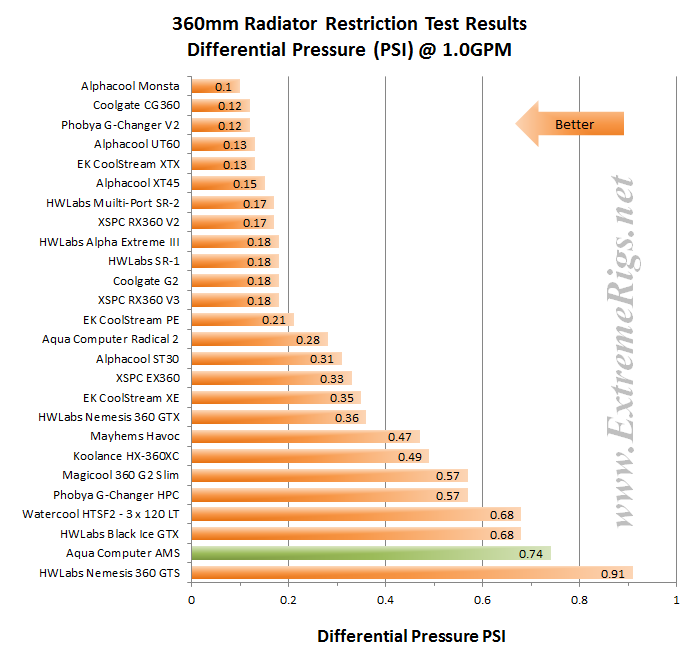
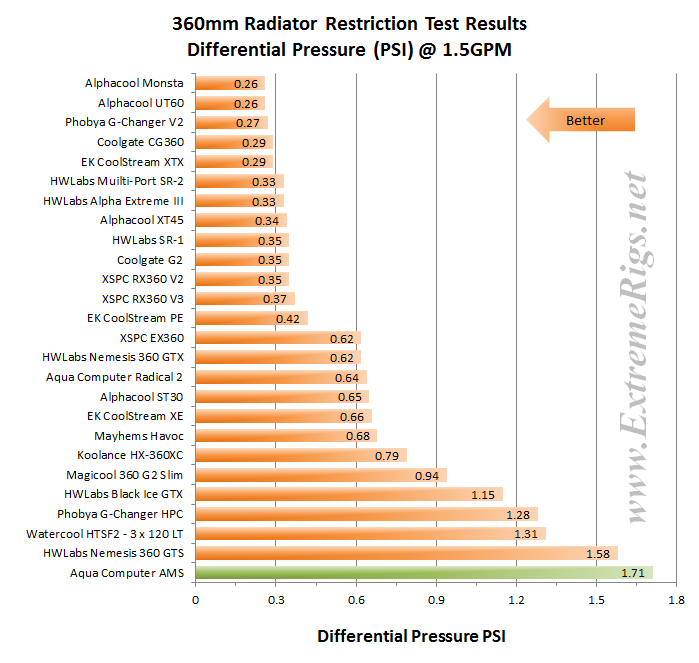

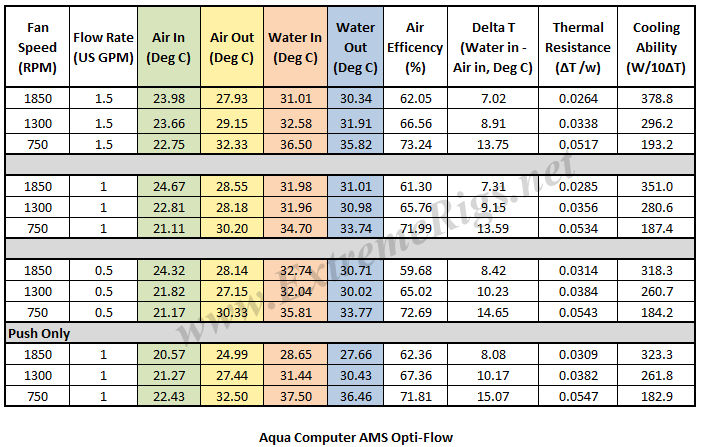
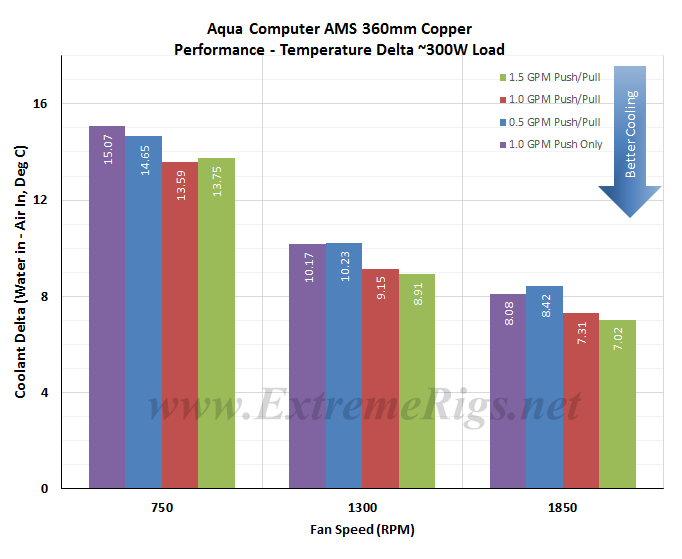
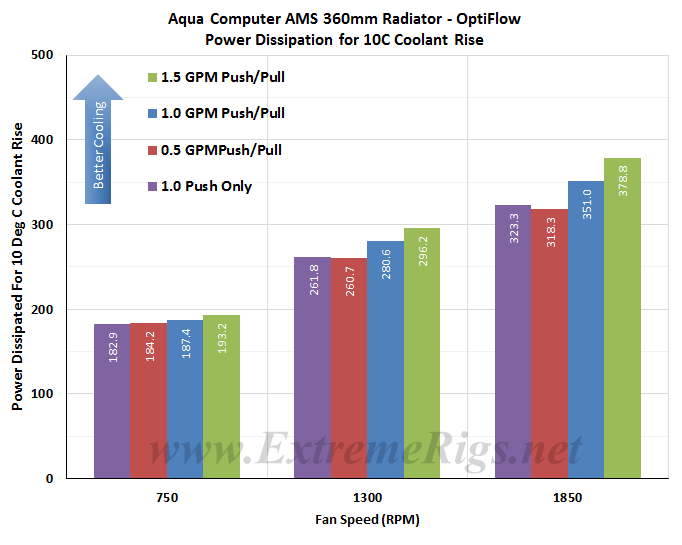
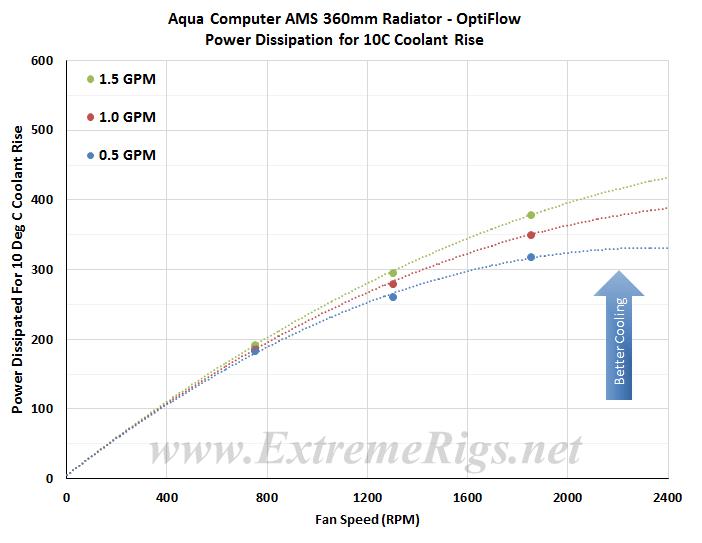
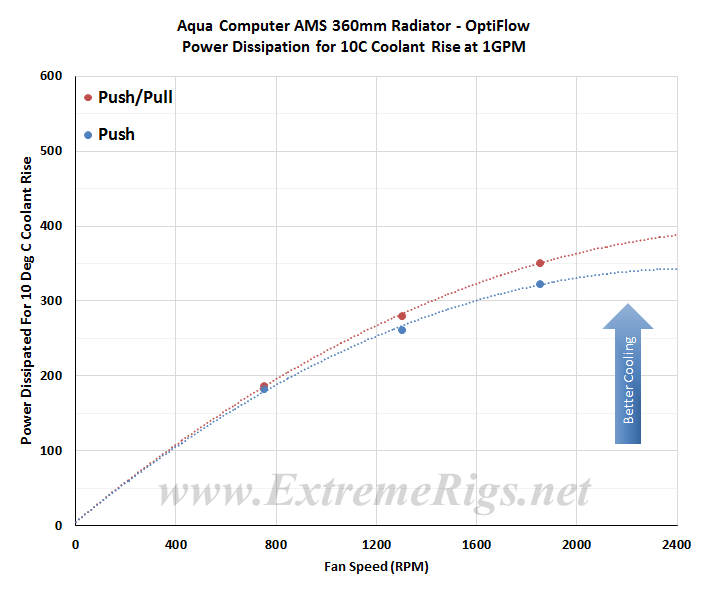
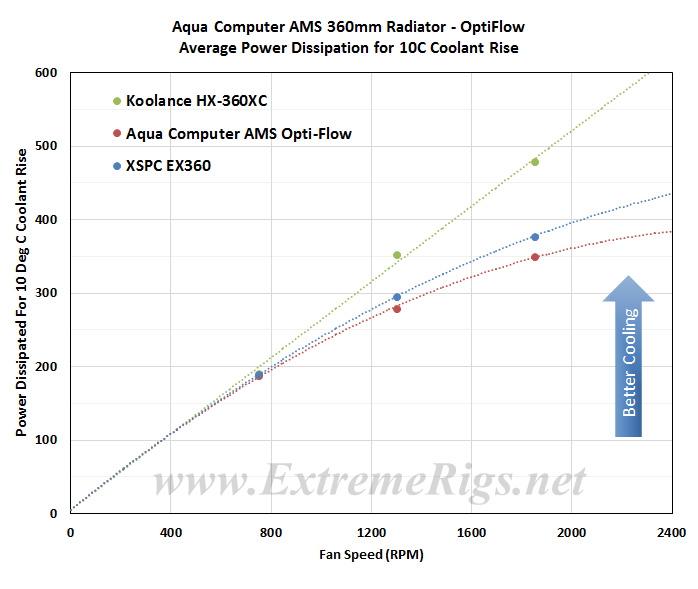
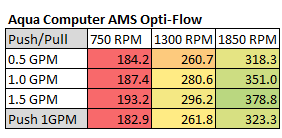
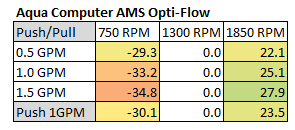
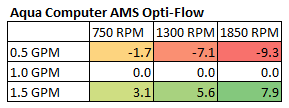
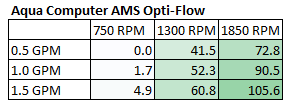
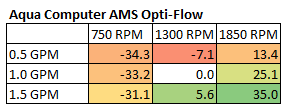
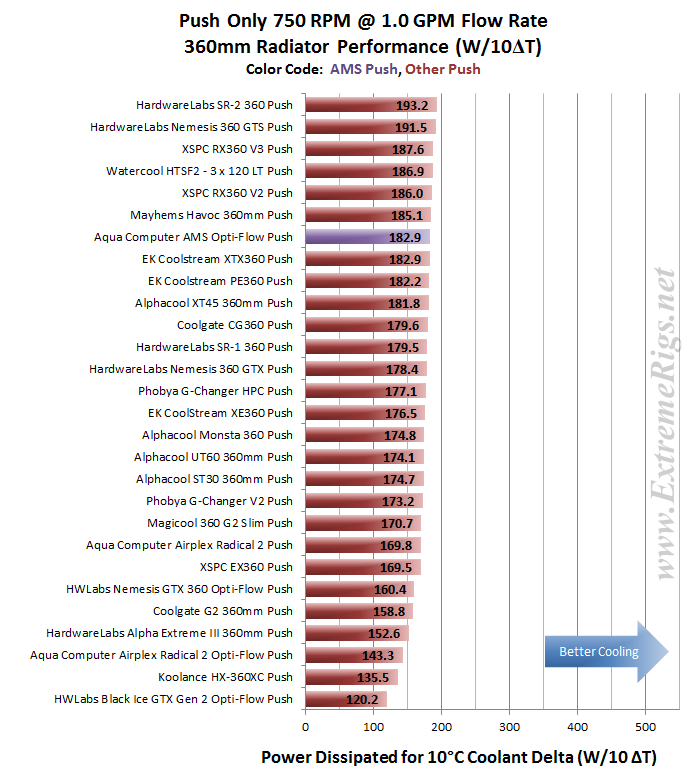
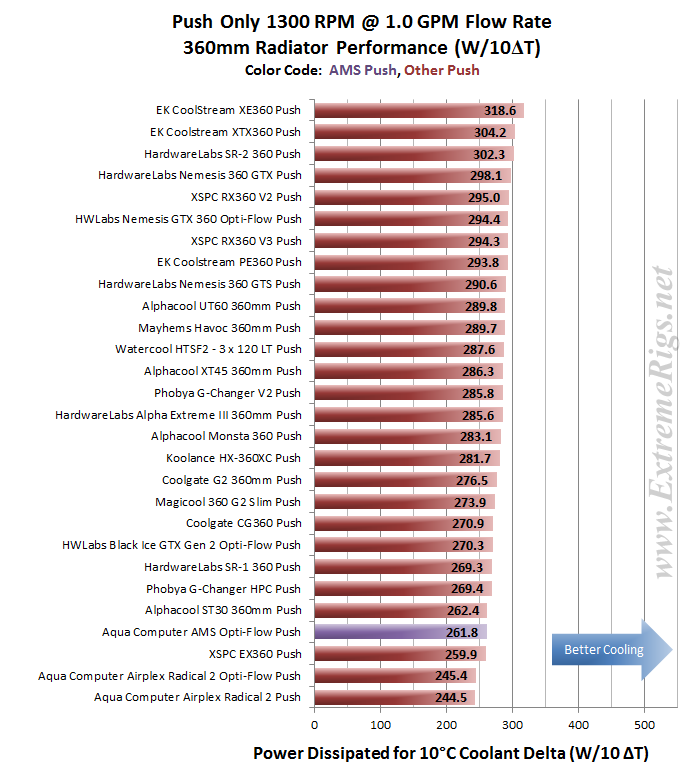
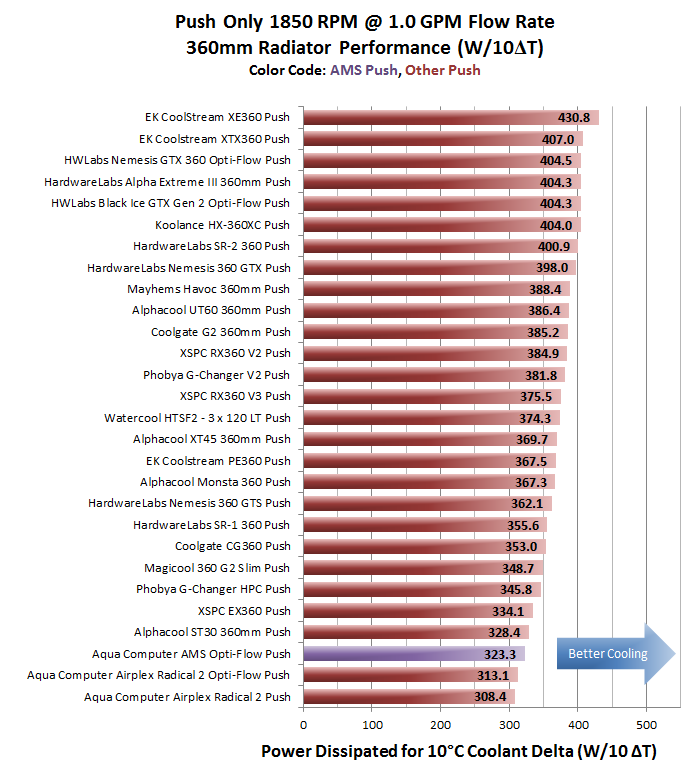
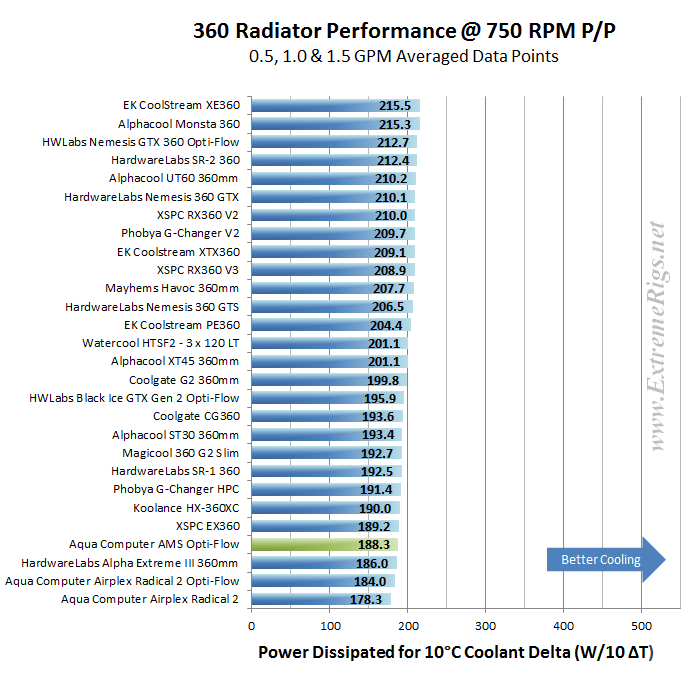
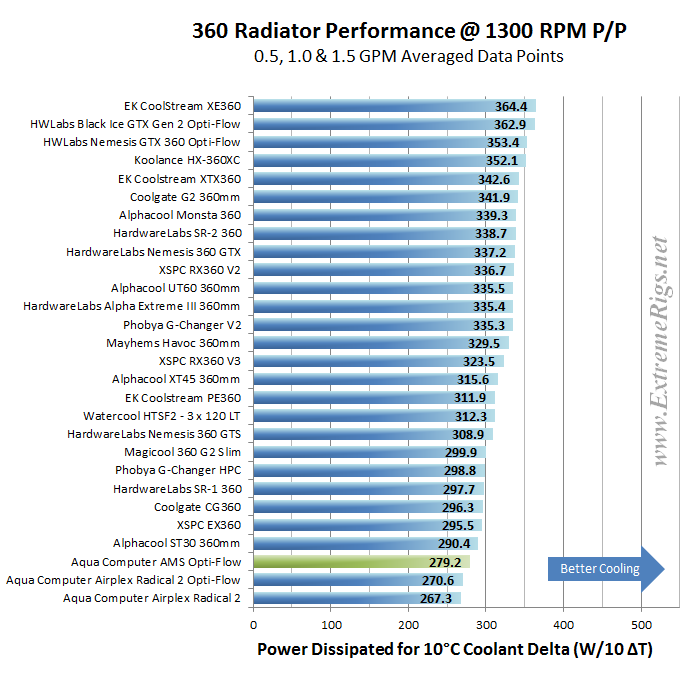
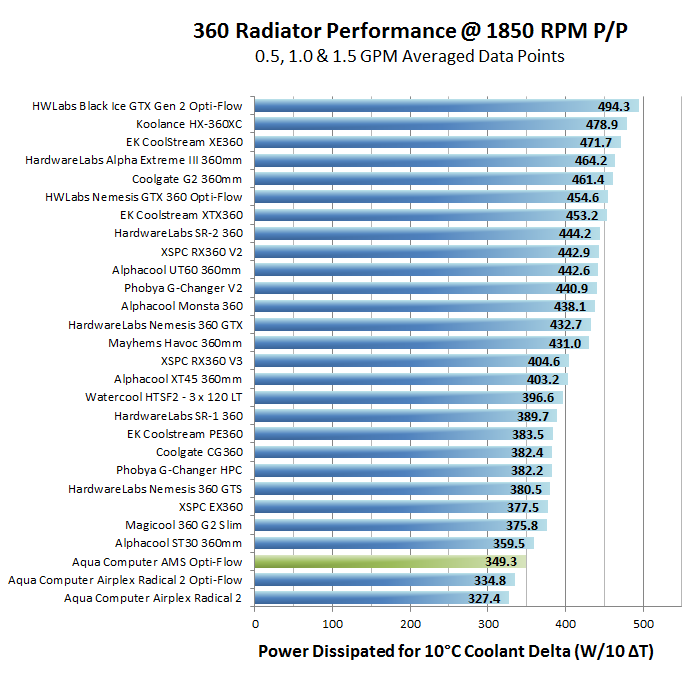
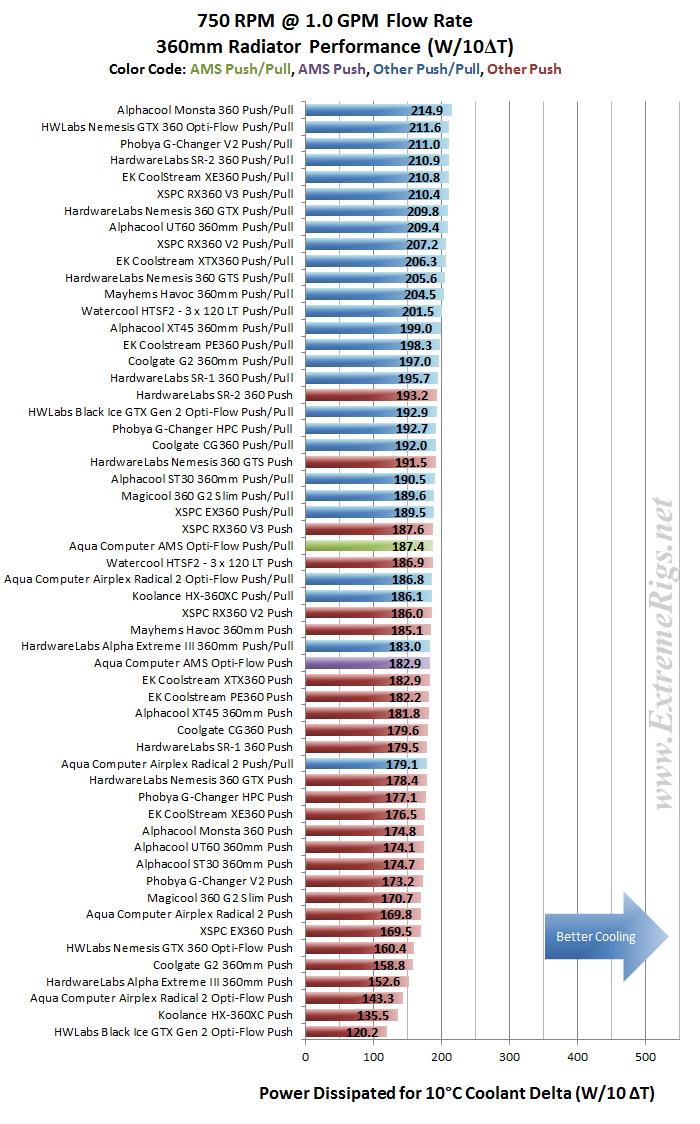
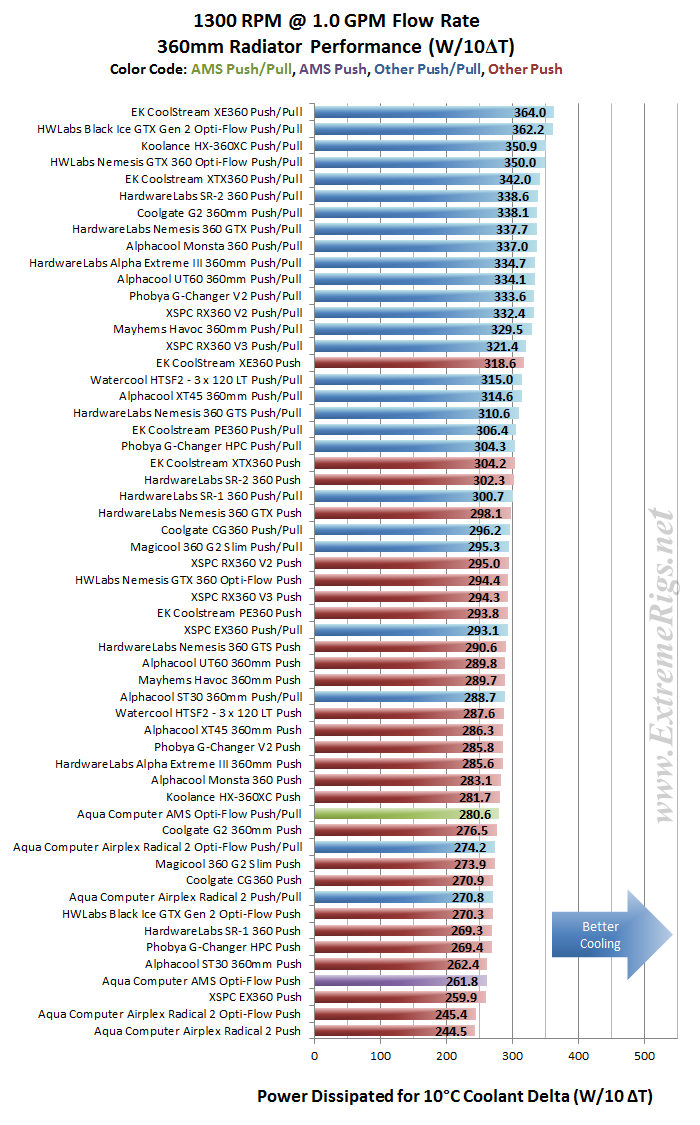
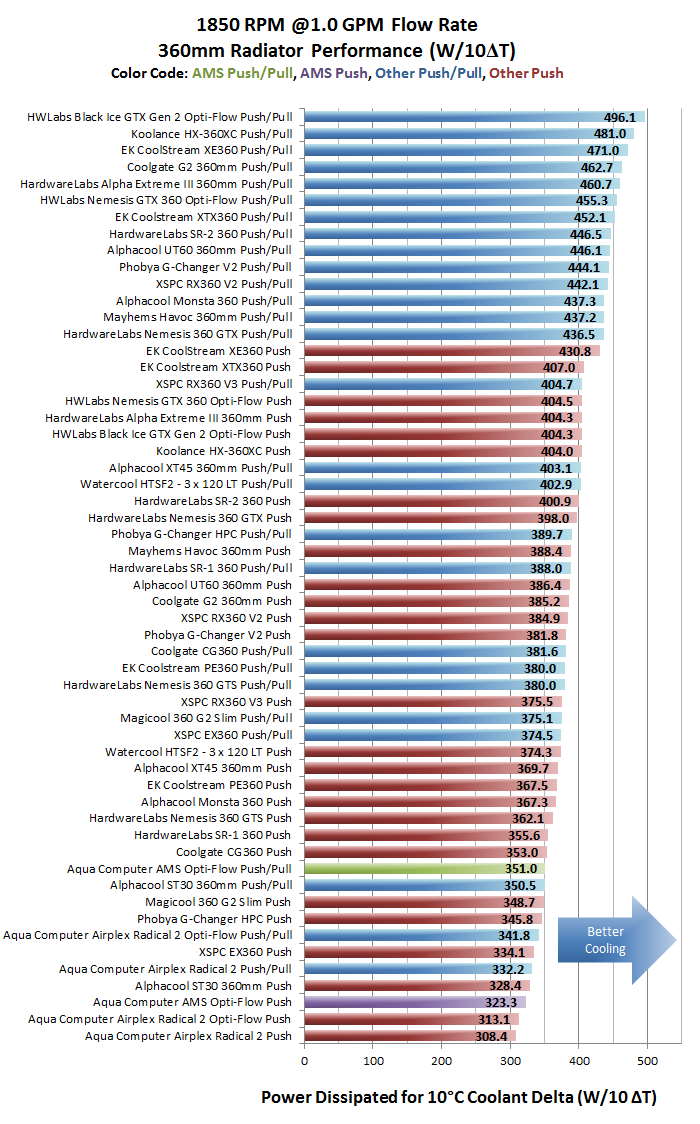
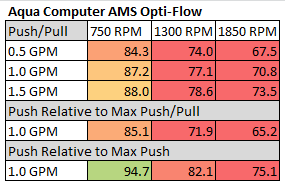
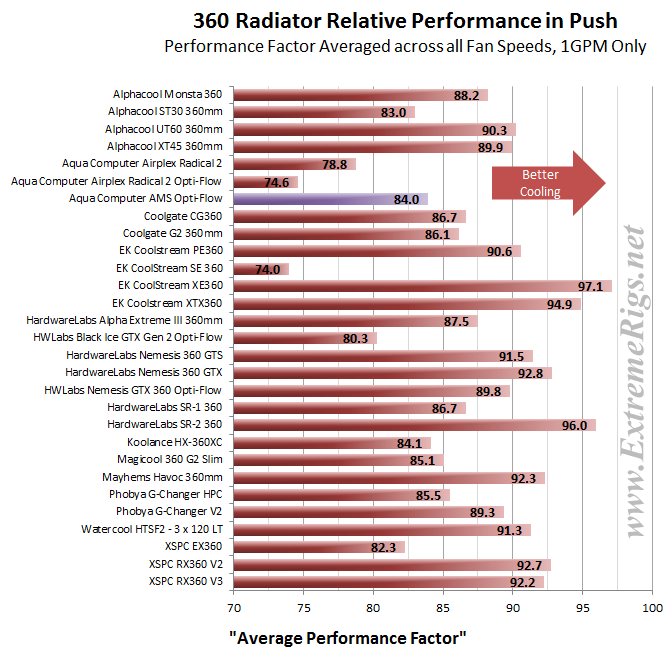
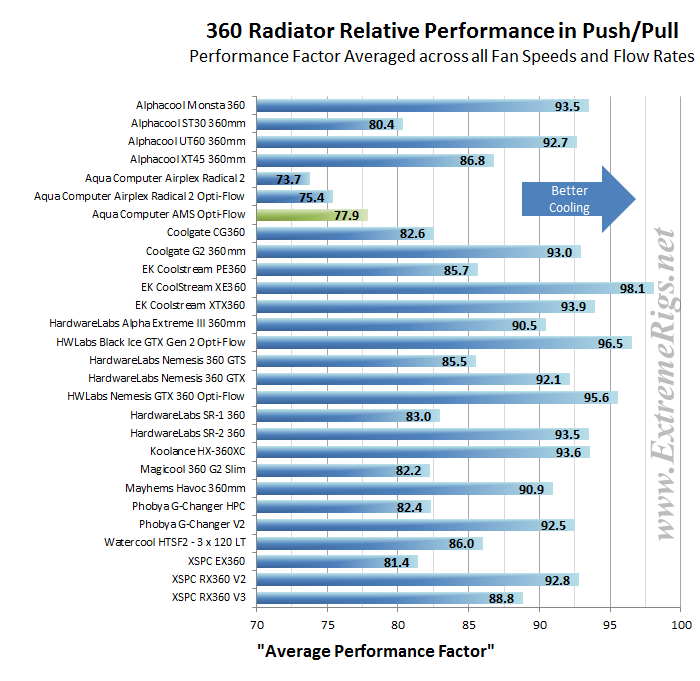
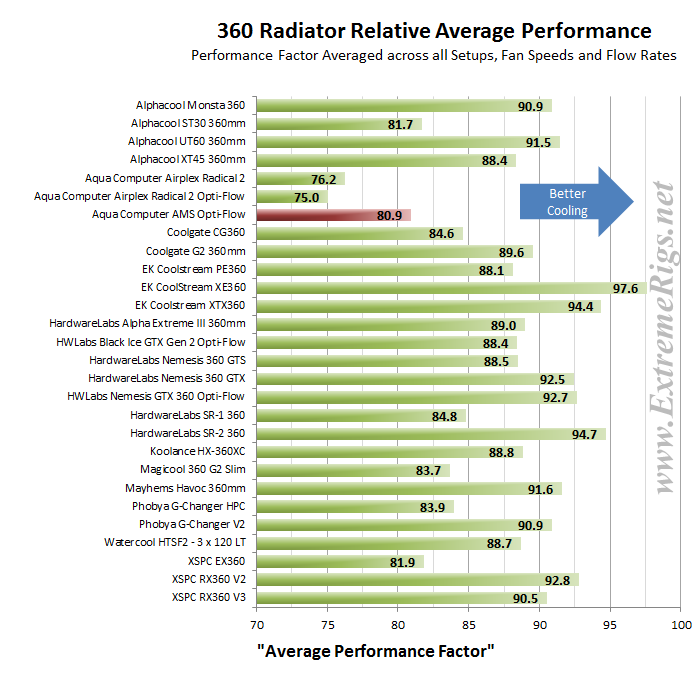
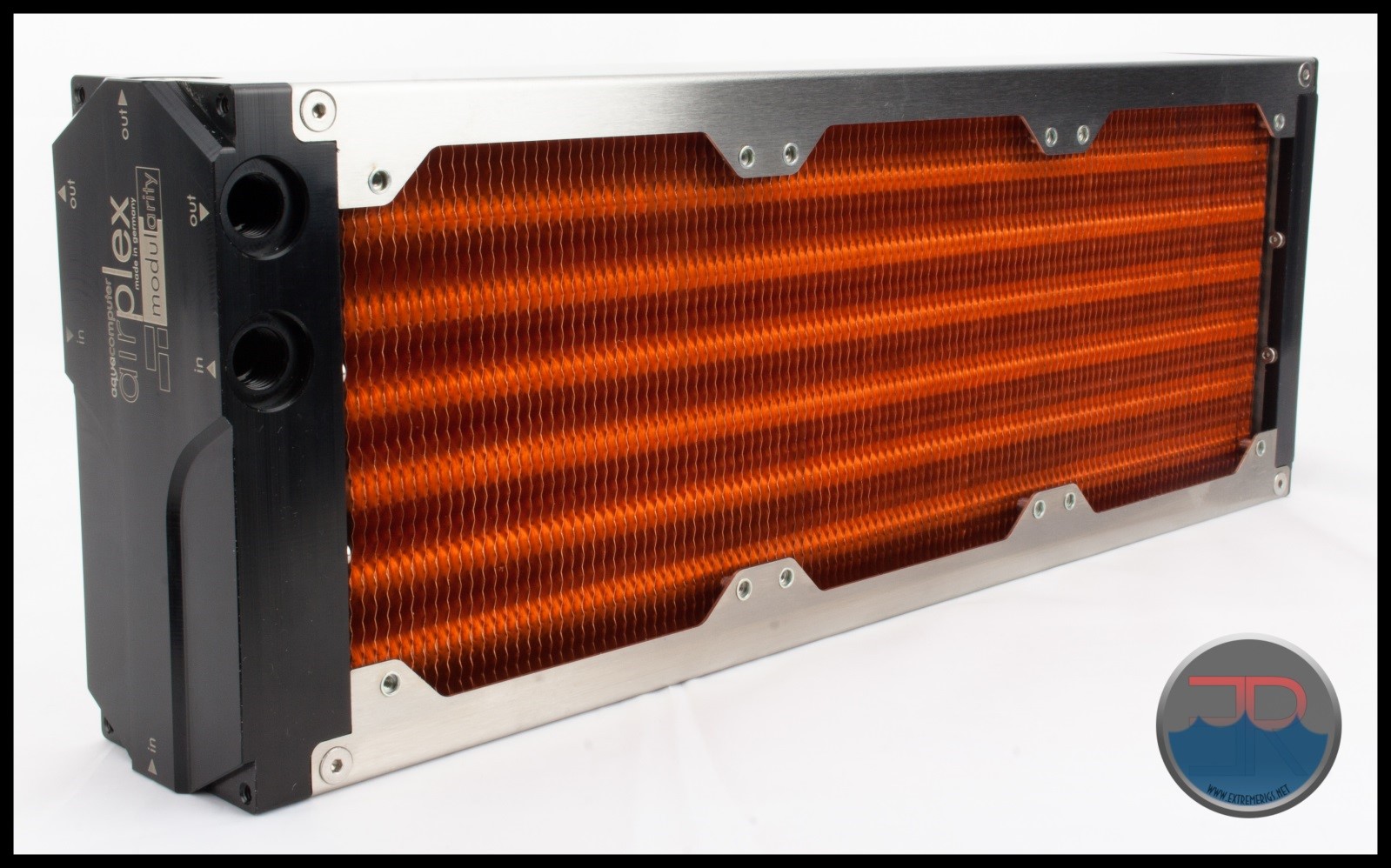



[…] Aqua Computer AMS Copper 360mm Radiator Review […]
[…] UT60 360 Radiator Alphacool XT45 360 Radiator AquaComputer Airplex Radical Copper 360 Radiator AquaComputer AMS 360 Radiator Coolgate CG 360 Radiator Coolgate G2 360 Radiator EK SE 360 Radiator EK PE 360 Radiator EK XTX 360 […]
[…] […]
Comments are closed.